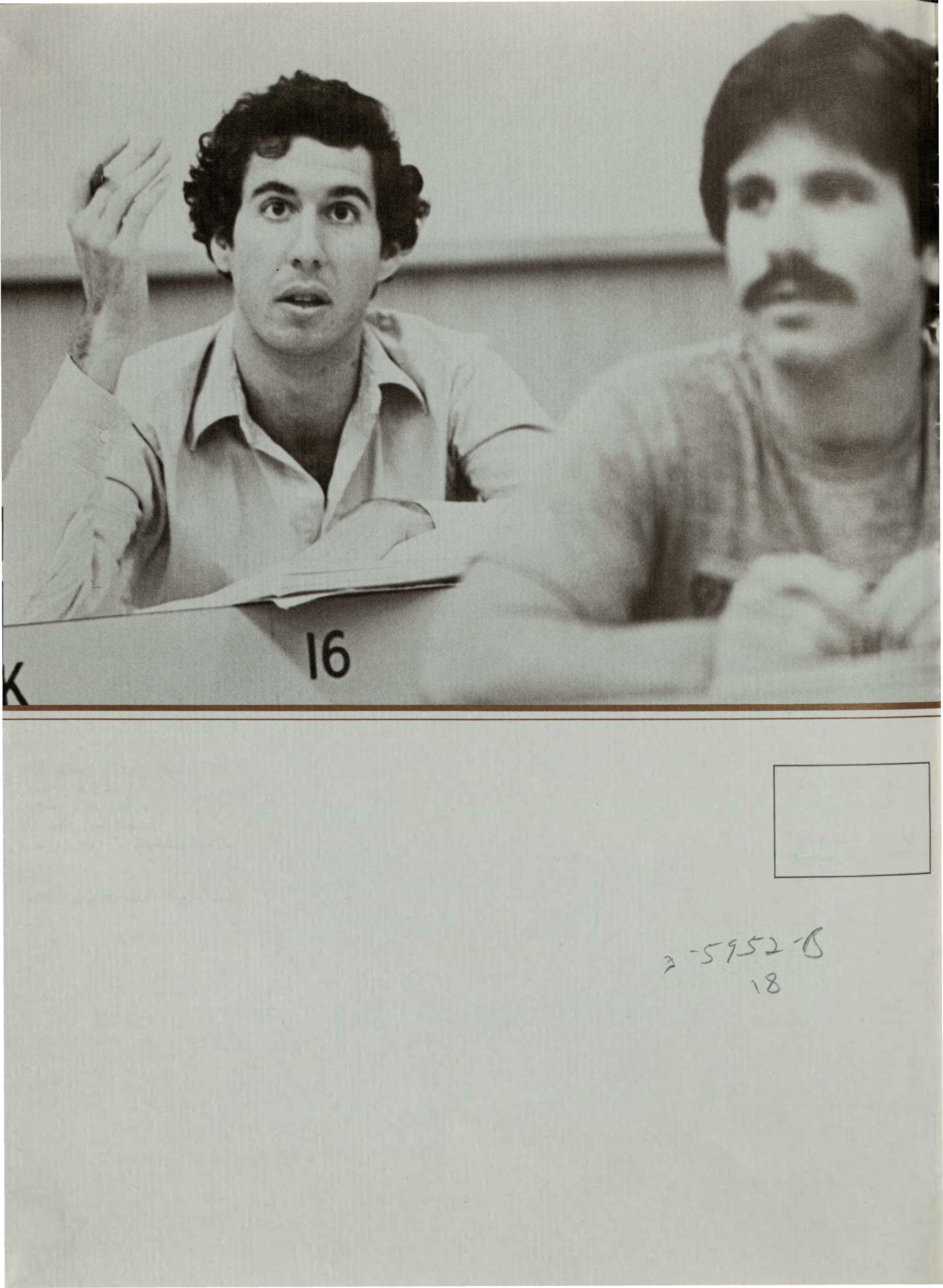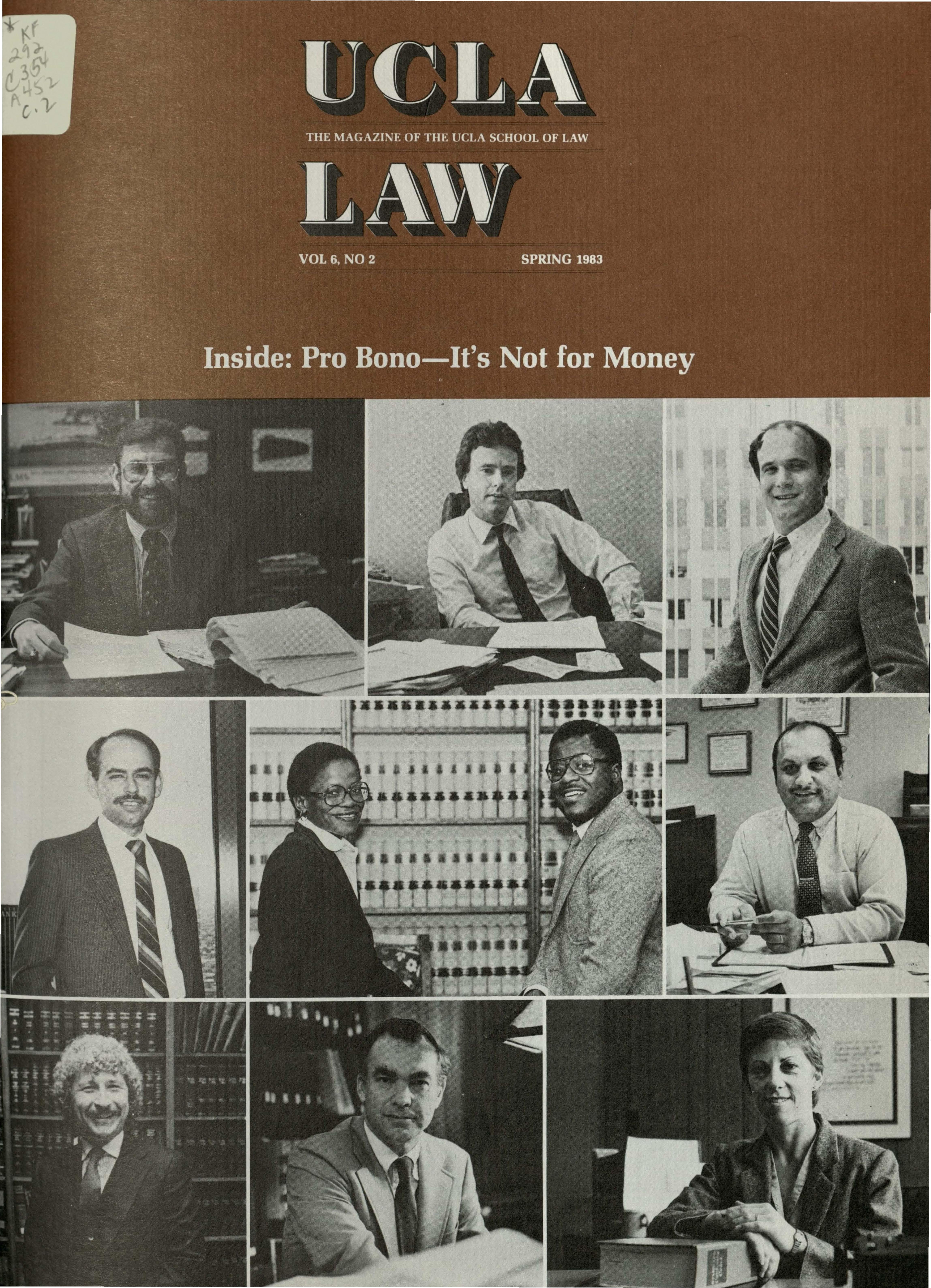

The Chadbourn Years
James HarmonChadbourn'spassingevokesmemories ofamaninwhomprofoundscholarshipwascombined with an unequaled personal style; the combination weldeddeeployaltiesamong ProfessorChadbourn, his students. andhis friends.
In his years at the UCLA School ofLaw, from 1950 to 1963, Chadbourn played a central role in UCLA·s emergence asafirst-ranklawschool. The naming of a senior support group as The Chadbourn Fellows is onetestimonyto thatfact.
Duringhistenureat UCLA, hewashonoredbybeing designated Connell Professor. Later, at Harvard Law Schoolwherehetaughtfrom 1963untilhisretirement in 1974, hewas Fessenden Professor.
As Professor William D. Warren observed, inrecalling the Chadbourn years at UCLA. "He was the most popular teacher who evertaught here."
JimChadbournwas a professor atthe University of Pennsylvania Law School in 1947 when Murray L. Schwartz was a student there. Professor Schwartz observes: "He was then, as he later became at UCLA (and at Harvard), an incredibly popular teacher. It is difficulttodescribehisstyle. Punctuatedwithhumor, hewasincompletecommandoftheclass, andalthough heneverexhibitedtheharshnessofa Professor Kingsfield, he was equally demanding of his students.He will berememberedbytheacademic andprofessional side of the legal profession for his scholarship: his revision of Wigmore on Evidence is likely to be his monument. But, I think, his memory will be most sharplyetchedinthemindsandaffectionsofhisformer students, for whom being in one of his classes was whattheycherishedmostintheirlegaleducation."
Lee B. Wenzel '57 summarizes those experiences: "ProfessorChadbournhadthatrarestofgiftstotransform sheer terror into pure adoration in a single
semester. As entering freshmen in 1954, none of us could figure out why Professor Chadbourn's classes were filled with juniors and seniors inthe back rows Only after the semester ended did we appreciate the humor. Here sat 120 plus, ashen faced students in mortal fear of being called upon by this seemingly sardonic professor of civil procedure. We were too young and naive to recognize that twinkle in his eye."
Professor Kenneth York gives anexample of Chadbourn's humor: "My first recollection of Chad dates back tothefallof 1950. Inanorientationmeetingwhere newfacultywere introduced, Chadmadethestandard bland remarks, and concludedwiththecomment that he had just left the University of Pennsylvania where 'hewas knownasthesmilingexecutioner.' ''Thatmost notablecharacteristic, his"feignedgruffness, concealed from many a depth of compassion for and interest in his friends among students and faculty," recalls Professor TedJones.
"My own favorite picture of Jim Chadbourn,'' York adds, "isofhimsittinginhisoffice incompletedisarray with books piled haphazardly on floor, desk shelves, and sills, struggling with a recalcitrant paragraph in some text he was writing, andmuttering to no one in particular, 'Thelaw is too rich.'··
The richness of humor continued his entire life. Harvey M. Grossman '54 remembers two recent incidents. Thefirstisfromavisit attheChadbournhome. "Jim Chadbourn showedus two giftshe hadreceived: one, a liquor decanter set he'd received when he left UCLA; the other, a tray he'd received onretiring from Harvard. Heopinedthatthe UCLA gift was by far the more practical anduseful one."
Editor: Ted Hulbert, School of Law
Alumni Editor: Bea Cameron, Schoolof Law
EditorialAssistant: Don Ezzell
Art Production: Marlyn April Pauley
Photography: ASUCLAPhoto Service

Several years ago, Harvey Grossman's wife and teenage daughters went to dinner at the Chadbourns. "At the time, Jim was at least 70, yet his impish wit. sparkling repartee, and zest for living were all very much in evidence. At the conclusion of the evening, our daughters remarked at how the years separating themfromJimseemedtofade awayinthecompanyof thisperenniallyyouthfulman."
Amemorialservicewasheldon October 12 atChrist Church in Cambridge.
Dean: Susan Westerberg Prager
Director of Development: Karen Stone
Directorof Alumni Relations: Bea Cameron
UCLALAWispublishedatUCLAforalumni,friends. andothermembersofTheUCLASchool ofLaw community. Issuedthreetimesayear.Officesat405 HilgardAvenue,LosAngeles90024. "Postmaster: pleasereturn 3579to Schoolof Law. 405 Hilgard. LosAngeles 90024."
"Pro Bono Publico: For the public good, for the welfare of the whole."
Black'sLaw Dictionary
Pro Bono Publico: It's Not forthe Money
byKathleen Neumeyer
he dictionary doesn't say anything about not getting paid for it, but most lawyers seem to thinkthat no matter how much good is done for the public, it doesn't really count as pro bona work unless it is done for
free, on purpose.
"Pro bona is work that you do for someone deserving that you never expected to get paid for," laughs James Nolan '64. "Everyone does some free work for his in-laws now and then, but usually they aren't a recognizedcharity."
Agreatmanygraduatesofthe UCLA SchoolofLaw giveoftheirtime andexpertiseto help a widerangeof civic and charitable groups, as well as individuals, who need but cannot afford legal services.
Theirinvolvementrangesfromnearlyfull-timetoa few hours a year on cases as big as the Los Angeles school desegregation trial and as small as helping a family recover its wrongfully repossessed living room sofa.
Some chose the legal profession in the first place because that was where they thought they could do !he most good. Some recent graduates say that their interestwasfirstpiquedwhentheyhandledinteresting povertylawcasesinthetrialadvocacyprogramduring lawschool. Othersneverreallygaveanyconsideration todoing probonaworkuntilthey had beenpracticing fora fewyears and had seen the need.
Some say that the pro bona cases they handle are fairly unglamorous ones that simply need doing, andotherssay that the cases are colorful andprovide � welcome change of pace from their bread-andutter practices.
ThomasLambert'71,apartnerinMitchell, Silverberg
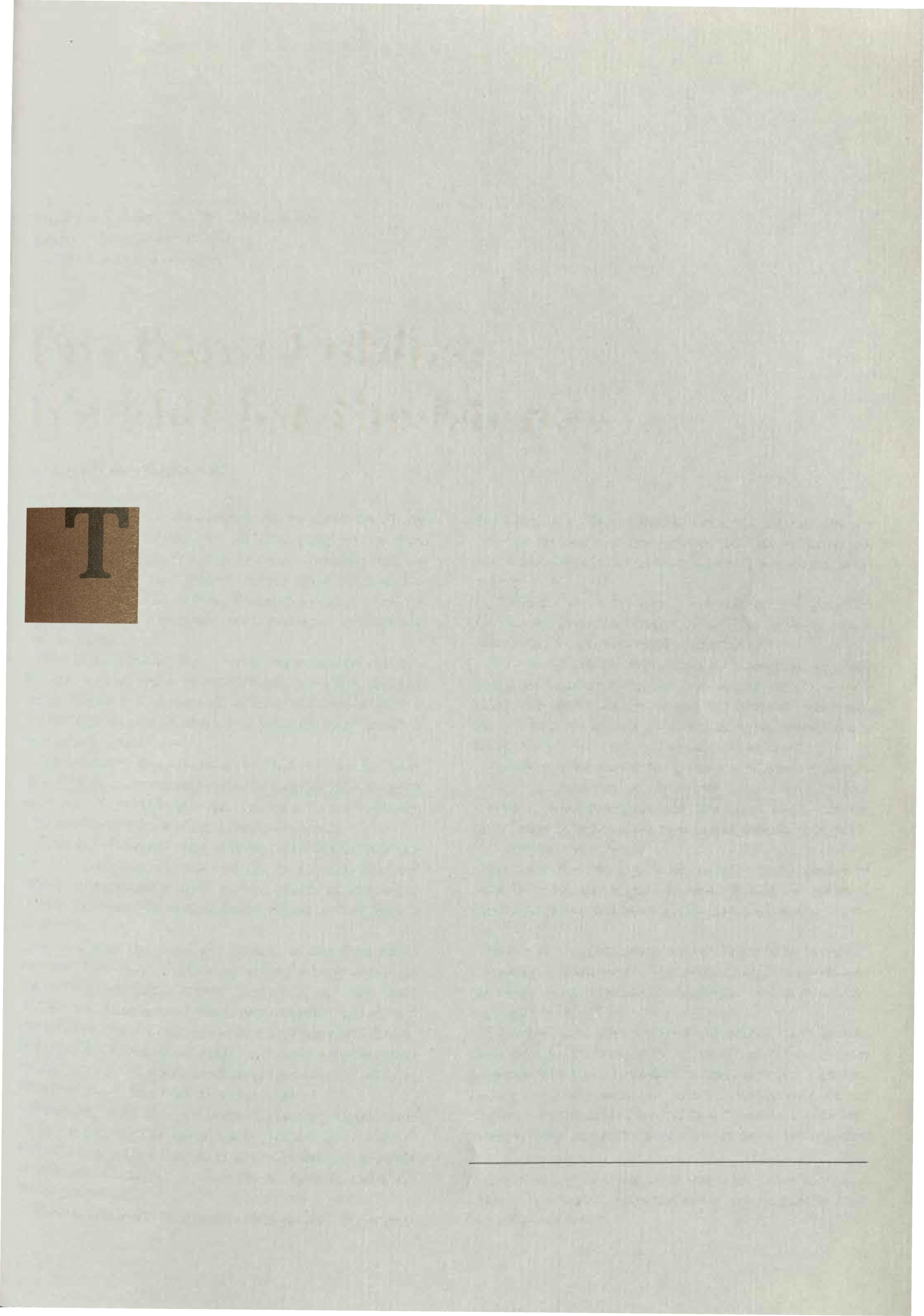
& Knupp,saysthatathisfirmatleast,itisnotjustthe new admittees who are enthusiastic about pro bona, but anumberofthe partnersandmanyseniorassociates aswell.
"I think that in the heavy American Civil Liberties Unionandmajortestcasesyouwillfindthatthoseare allcarriedbysenior people," Lambertsays.
"Pro bona can be defined pretty loosely as anytime you give legal services forfree-intentionally. And I think that most corporate and tax firms do some pro bona work on behalf of charitable and educational institutionswithwhichthey are associated."
Lambert was one of the principal litigators for the ACLU in Crawford v. Board of Education, the Los Angelesschooldesegregationcase,andhasalsoserved on a federal indigent defense panel, handling appeals forcriminaldefendants.
Hefindsthe criminal work aninterestingchange of pace from his usual practice, which includes general business litigation and some securities and antitrustwork.
"Myviewisthateverylawyeroughttobeinvolved insomeprobonawork,"Lambertsays. "Heowesitto theprofession. Itmakesmefeelbetteraboutmyselfas a lawyer to do it."
Lambert, who interviews for hisfirm, says that in the early 1970s "major law firms found that it was important to have a viable in-place pro bona policy, because the students we were interviewing asked about it. In the mid-'70s and late '70s, there was less interest. But now there seems to be a resurgence.
Kathleen Neumeyer, a free-lance journalist, is a contributing editor to Los Angeles Magazine and a correspondent for the Economist of London.
Thomas Lambert '71
More students areaskingme aboutthe opportunity to do pro bona work."
When Dan Garcia '74, now a partner at Munger, Tolles & Rickershauser,wasapplyingforjobs,hemade itclearthathehadalwaysbeenactiveinthe MexicanAmerican community and always would be.
"Oneoftheattractivefeatures tomeaboutthisfirm was thatit encouraged lawyersto doprobono work," Garcia says.
Onlyafewmonthsafterhewasadmittedto thebar, Garciawas asked by theACLUto represent plaintiffs, as co-counsel with the Western Center on Law and Poverty, in an action against the Santa Ana Unified Schooldistrict,whichhad refused to apply for federal funds to provide bilingual education. Because of their efforts, the school district received between $5 and $7-million over the next three to five years.
Garcia also began serving as a hearing officer for the Los Angeles Police Commission, and in 1976 was asked to hear a series of grievances against the Los
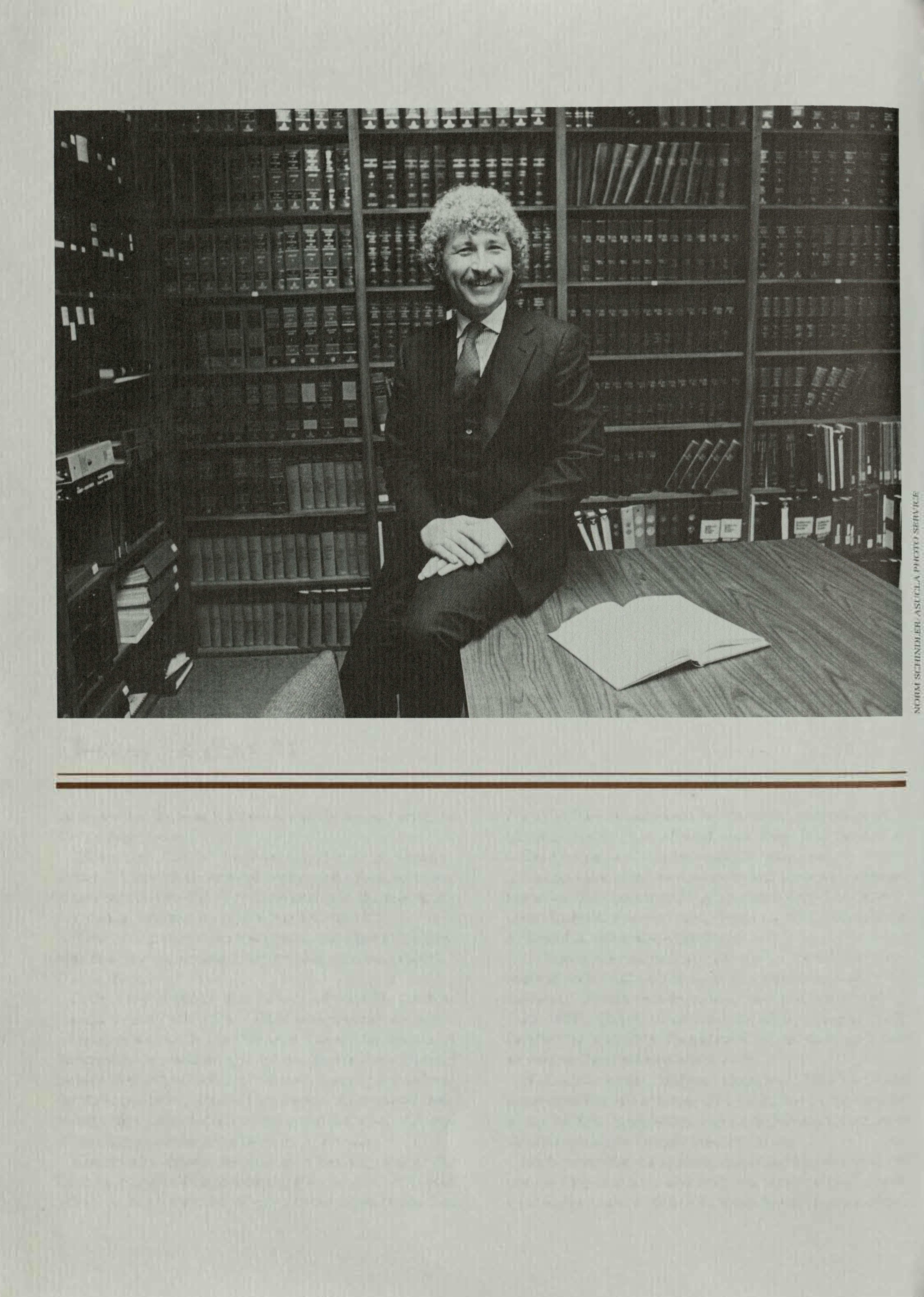
Angeles Fire Department by minority members of a training class, who alleged that they had been dismissed because of discriminatory practices.
Garciaconducted44 hearings, andwrotea400-page reportonthehistoryandbackgroundofthefiredepartment,includingrecommendationsforcorrectingflaws he found in the training process.
"I found no consistent pattern of racial discrimination, but I did recommend the reinstatement of 14 trainees," Garcia recalls. "Most were not reinstated."
In 1976, Garcia was appointed by Mayor Tom Bradley to the City Planning Commission, and has served as its president since 1978.
HeisalsoatrusteeandpastpresidentoftheMexicanAmerican BarAssociationandamemberof theboards of the UCLA Foundation, the CORO Foundation, and theArroyo Vista Family Health Clinic.
Hefigures that he spends about500 hours ayearon non-paying matters, and still manages to bill "about anaverageamount,andsometimesbetterthanaverage"
Dan Garcia '74
onhis regular civil litigation and labor practice.
"The firm has encouraged me, and even helped me onsome cases," Garcia says. His position on the City PlanningCommissionmakeshimwell-known"tosome movers and shakers, and that may bring us some business,"hesays, "butinthemain, welosemoneyon thosehours I spend."
Garcia'sfirmisoneof 50firms in Los Angeleswhich participate in the Volunteer Legal Services Project operated by Public Counsel the public interest law firm sponsored by the Los Angeles and Beverly Hills Bar Associations.
M�ny lawyers find that doing volunteer work for Public Counsel is an easy andefficient way to do pro bona work.
Ann Haskins '74, associate director of Public Counsel, says that she has been "struck by the number of peoplewhodon'thavefirst-handknowledgewhothink th�tpro bona isn't trendy. They seem to think that it is the 1950s all over
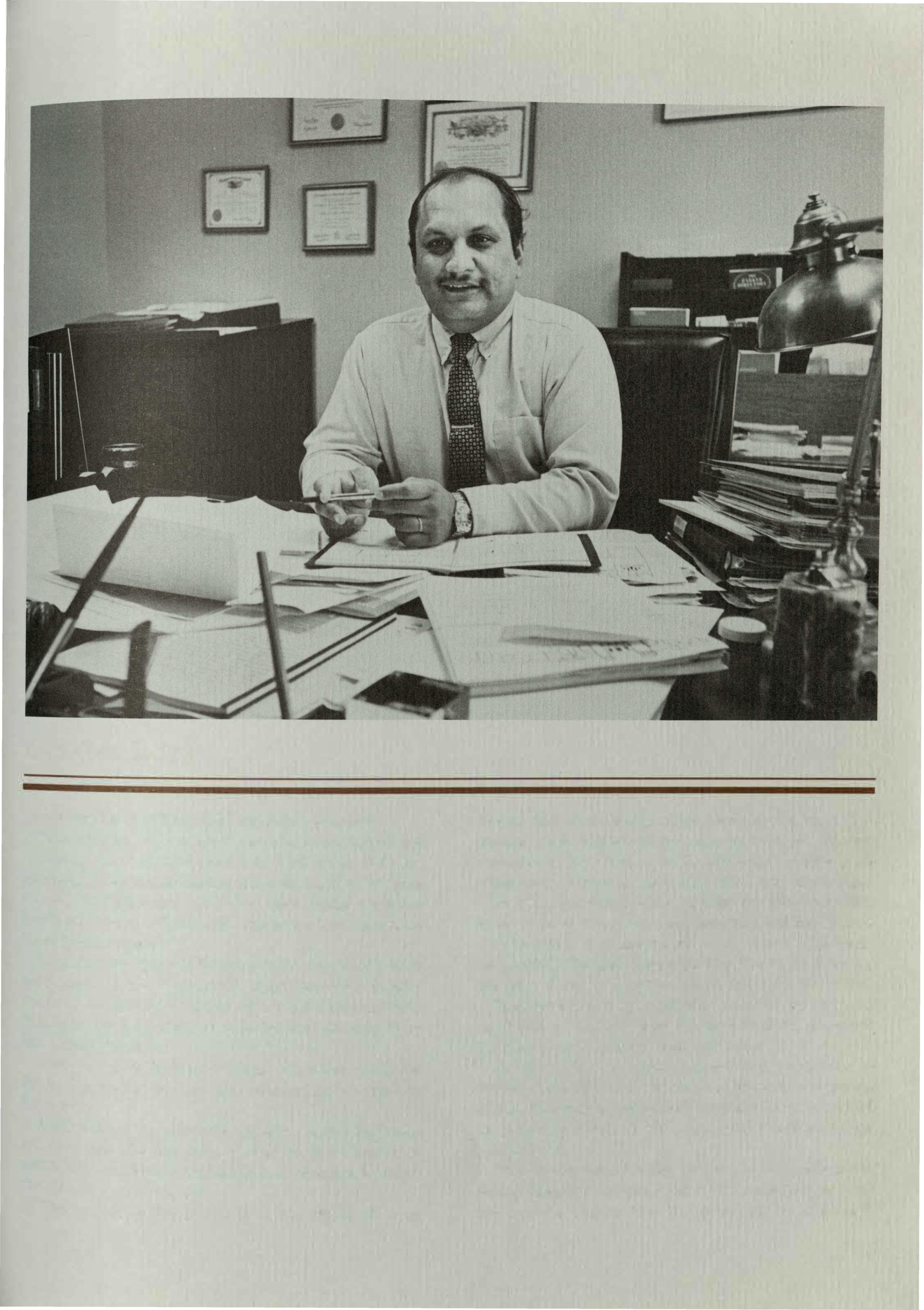
again, and that young people are only interested in gettingajob. Butwhat Iseehere,ofyoungerandmore experienced lawyers as well, who comeinhere week afterweektotakeoncases,justbeliesthatstereotype."
Haskins saysthatwhatmostlawyersareunwilling to do is to waste their time, and that Public Counsel seestoitthattheycandoprobona workasefficiently as possible, by pre-screening the clients and having thefiles all readyfor themwhenthey takeon a case.
"LawyerswithaspecializedpracticeinCentury City can't just go out on Santa Monica Boulevard looking for poorpeopleto help," Haskinsnotes.
So the three in-house counsel and paralegals at Public Counselscreentheclients.Whenthevolunteers arrive,theyreceivepacketsallpreparedforthemwhich include the facts of the case and pertinent legal memoranda.
"We screen them for the nature of the problem and forthefinancialcriteria,sothatwhenthelawyer takes the case he knows that the priorities have already
Ann Haskins '74
been set, and he also knows that the case has some compatibilitywithhispractice," Haskins says.
Since its inception in 1970, this public interest law firmhasgrownto becomeone ofthelargestbar-sponsoredprovidersoflegalservicesinthenation. Itscases arelimitedtofourareas:landlord-tenantdisputes,real propertyfraud,consumerfraud, and uninsuredtorts.
Haskins points out that real property fraud is a problem unique to thiscity.
"Poor people don't usually own their own homes, butinLos Angeles,wherewehavemostlysinglefamily dwellings,therearemanylowincome people whohave a $10,000 to $20,000 equity in a house they bought years ago, before the boom in real estate prices. They are frequently preyed upon by people with various scams,"she says.
Because of the volume of cases they see, Public Counsel attorneys are able to discern a pattern in fraud cases, and sometimes are able to go after major perpetrators.
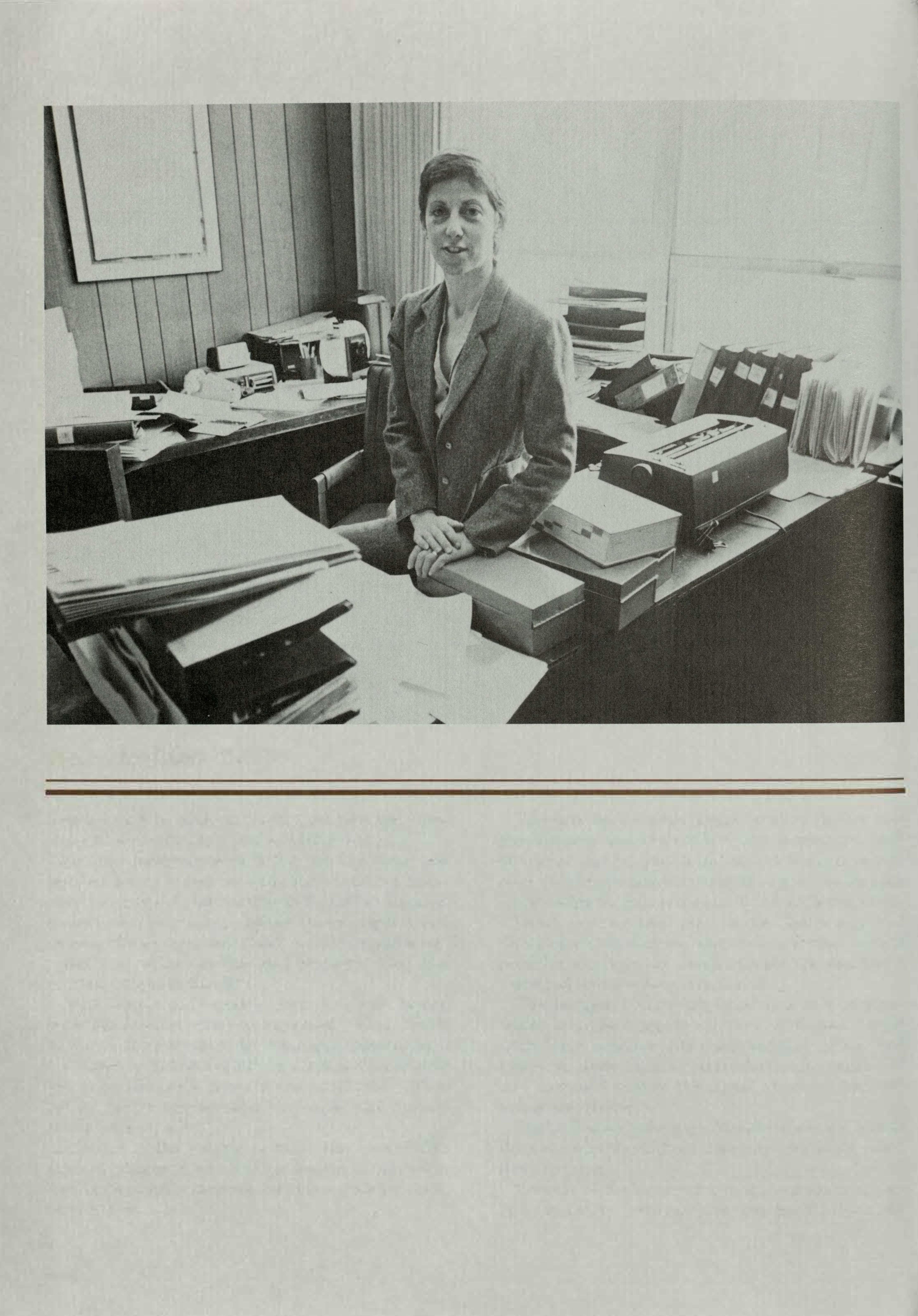
Through the Volunteer Legal Services Project, sole practitioners, government lawyers, corporation staff attorneys, and lawyers from major law firms help to meet the chronic shortfall in legalservices to the poor byprovidingongoingrepresentationtoindigentclients.
Other lawyers take part in the Community and Charitable Organization Counseling Project, which provides pro bona tax and corporate assistance to a variety of volunteer organizations.
The Indigent Taxpayers Panel is a new program which helps poor persons withtax problems. People with large families often are audited. When that happens, these families are referred by Legal Aid and assigned among the panel of more than 100 volunteer attorneys.
PublicCounselvolunteers,Haskinsnotes,comefrom the most liberal and from the most conservative law firms in town.
Because of the large number of cases she oversees, and the nearly 1,000 lawyers who handle them, she
James Nolan '64
sometimes feels like she is running the largest law firmin town.
For Haskins, pro bono work was a naturalcontinuationofherexperienceat UCLA SchoolofLaw.Asthe Daily Bruin's first woman editor-in-chief, she had covered student protests, and when a student strike occurred, she had arranged legal representation for those arrested in the demonstrations.
"Whenthis PublicCounseljobcamealong,Ithought to myself, 'That's the same thing I was doing in law school,' " she says.
James Nolan'64saysthatwhenhewasinlawschool, working as an insurance adjuster and salesman to supporthisfamily (whichnownumberssixchildren), he didn't have time to think about anything except getting a job.
"I was just interested in being a lawyer, and I was very happy when Mr. Duque offered me a job,'' he recalls.
NowapartneratAdams, Duque & Hazeltine, Nolan
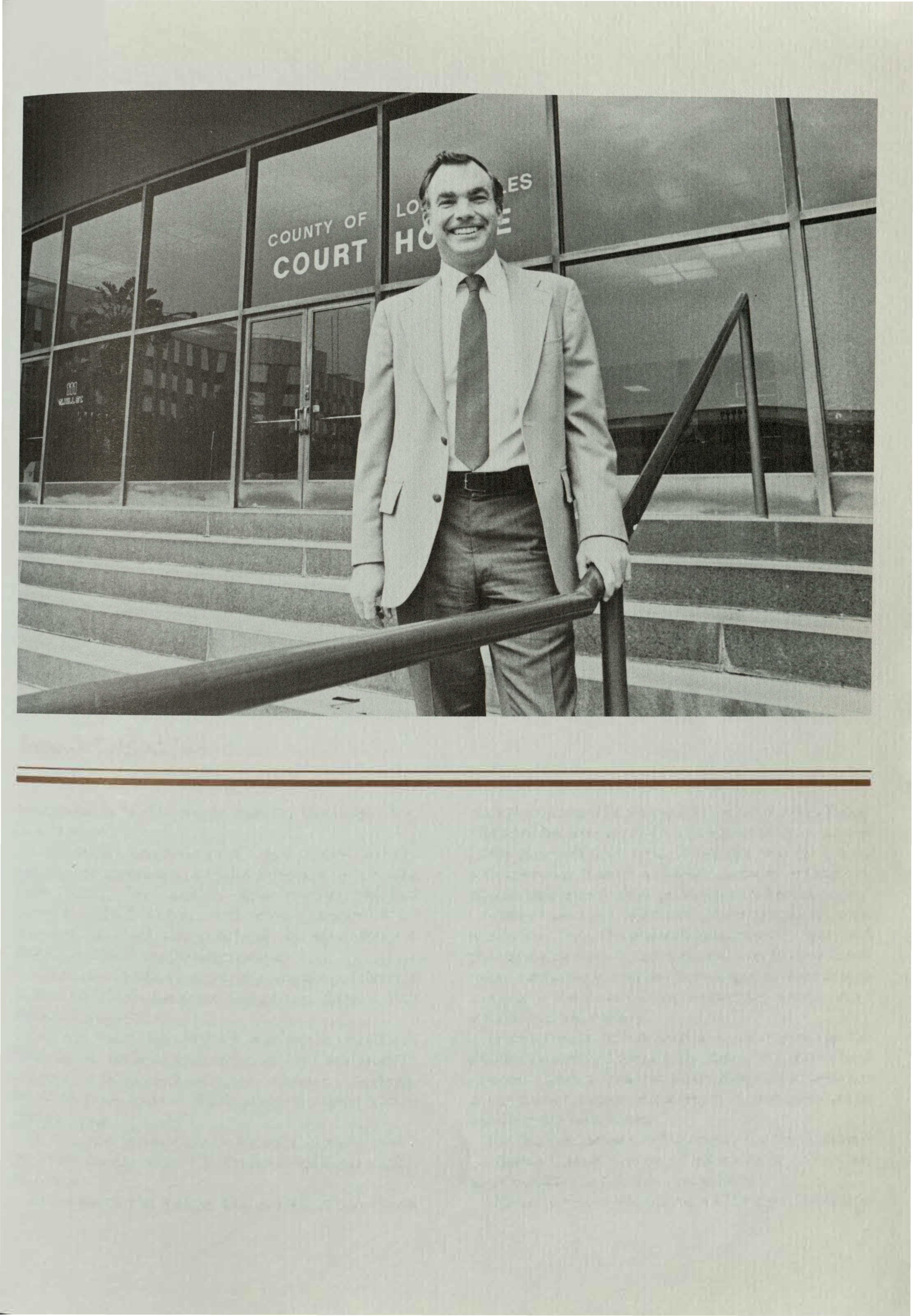
wasinstrumentalingettinghisfirminvolvedin Public Counsel "becauseitgivesusanopportunitytouseour skills in an efficient way. When you pick up a case, youknowthatthereisaplausibleissuetobelitigated, andallyouhavetodo isgetinthereandbealawyer."
Nolan's own pro bono cases have ranged from an easy one-where the plaintiff inanautoaccident sued the wrong Garcia-to more complex real estate fraud cases,includingonewherehemanagedtocleartitleto a house a couple had been making payments on, to whichtheyhad no title.
More recently, he has been active in organizing the PublicCounselorsProgram,throughwhichseniortrial attorneys withat leastten years' litigation experience actasmentorstonewadmitteeswhoneedguidancein handling pro bono cases.
He also does some pro bono work for the Southern California Cancer Center, of which he is a director, assistingtheminheirship proceedings.
"There'sa satisfaction involved,''hesays. "I feel itis
Bruce D. May '79
partof the responsibility of a lawyer, and it is nice to be able to do what you do and to be able to help somebody. It allgoes together."
Bruce D. May '79, an associate at Parker, Milliken, Clark & O'Hara, began taking Public Counsel cases duringhisfirst year inpractice "motivatedbyadesire to get some lawyering experience," he says. "It is an easy way ofgetting some cases where you can formulate your own strategy and work on something byyourself."
Mayhadone case where awoman's $200checkto a furniturestorebounced,andthecompanyhiredsomeone to break into her apartment to repossess the sofa. Evenaftershepaid $200incash,theyrefusedtoreturn thesofatoher. May gothercouch back, plus $3,000in punitive damages.
"Idon'tseemyselfas arealcrusader,butthepattern of practice onthe part ofthis companywastopreyon people who are the most vulnerable, to whom a $200 sofa is ahugepurchase. Ifeltthatoursettlementmade
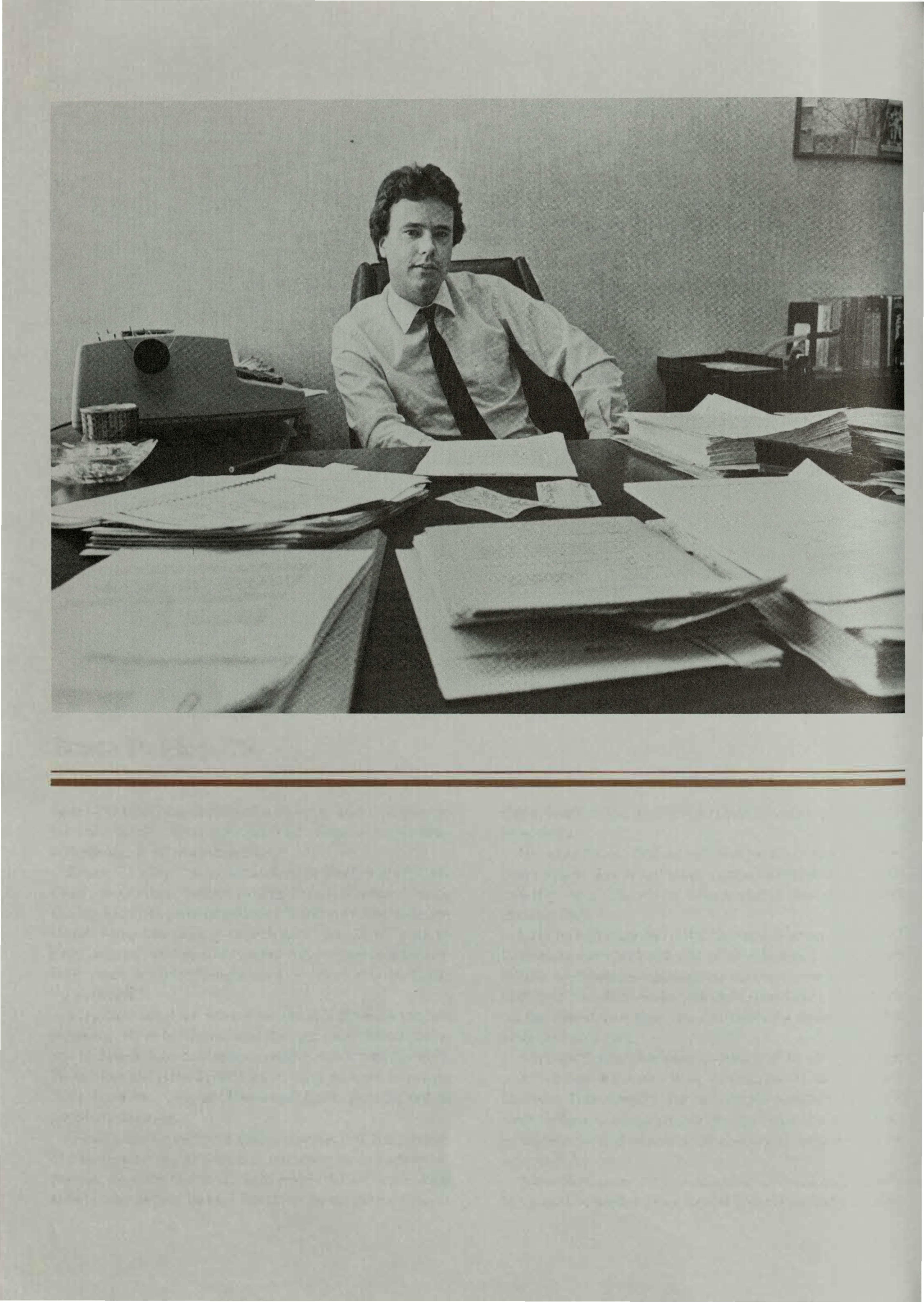
themthinktwice,soI hada sense ofaccomplishment," Maysays.
He also finds that other lawyers involved in pro bona work "are a lot more cooperative than lawyers usually are. There's a camaraderie that you don't usuallyfind."
Mayhasalsotakenonthedefenseofsomeuninsured motoristsandthinksthatitis "challengingtotestone's ability todefendanunpopularcause. Some peoplefeel that you shouldn't help put uninsuredmotorists back on the street, but they are entitled to a defense, and it puts you to a test."
May said that he was motivated to do pro bona work when he saw "how expensive it is to hire a lawyer. There really are no simple matters in a law firm. When a client comes in the door, he's rung up hundreds and thousands of dollars in fees before he knows it."
Alan Benjamin '77 is a member of Public Counsel's taxpanel. Asenior associate at Morrisonand Foerster,
Alan Benjamin '77
he began his pro bono work by assisting some child care centers with their tax problems He wrote the brief for a successful appeal of a California statute whichpreventedchurchesandsynagoguesfromallowingchildcarefacilitiesto operate ontheirpremises,on groundsthattheirtax-exemptstatusrequireda "unity ofuse and ownership."
As a result of his appeal, child care centers may now operate in churches withouteither entity risking itstax-exempt status, Benjamin said. Benjamin said that Morrison and Foerster has a commitment of 50 hoursper attorney per yearfor pro bonawork,andthatsincesomeattorneysdonotchoose to do that much, he is able to devote more time to pro bono causes
. He hasbeen instrumentalinhelpingvariousgroups '.ncorporate as non-profit, tax-exempt organizations, including the National Center for Immigrant Rights, whichseparated from the Legal Aid Foundation. He also prepared background material on statutes
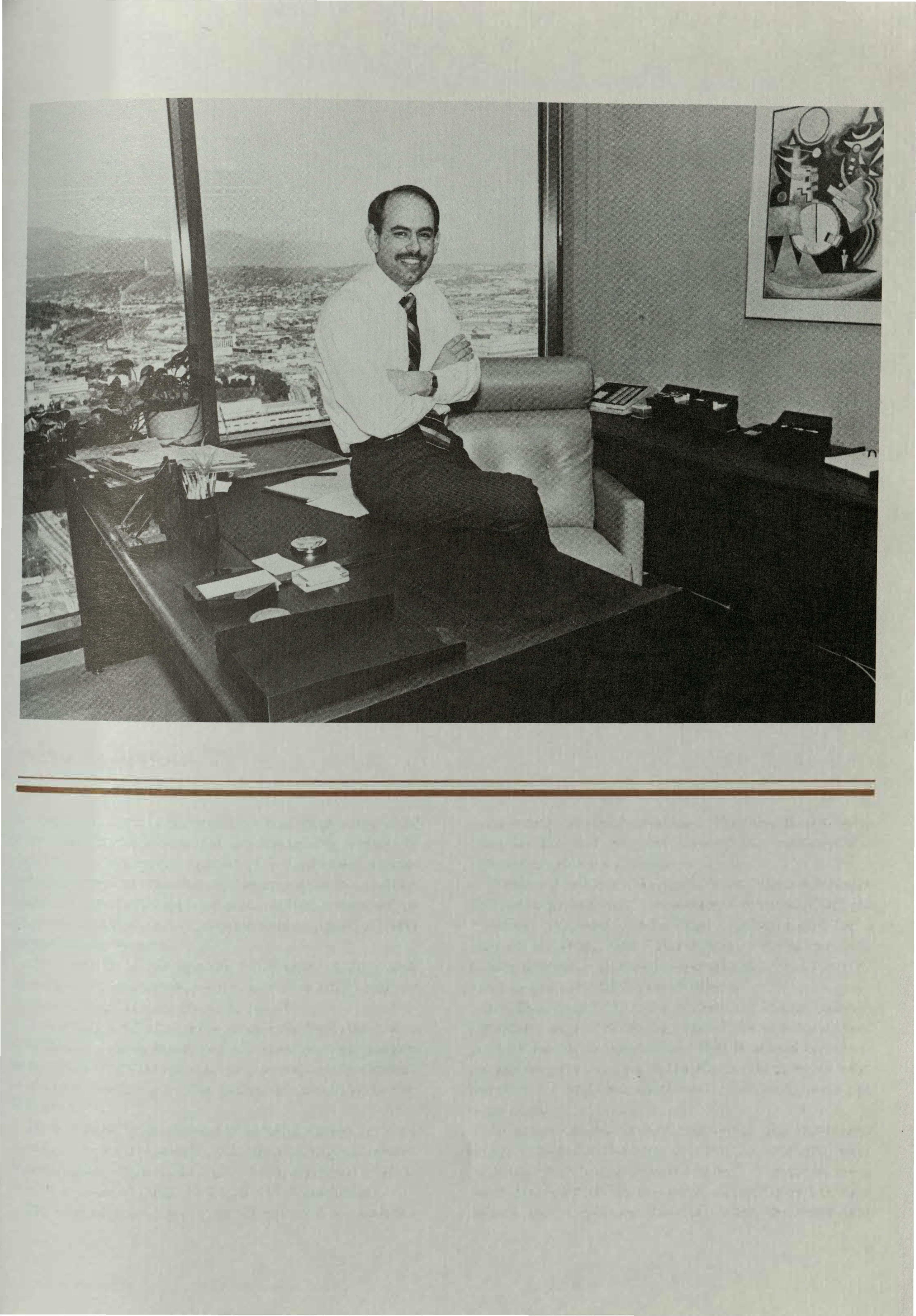
concerning nursing homes and otherhealth care facilities for the Los Angeles County Bar Association's referralserviceforthe elderly.
"I guessitisthe 1960shippie inme," Benjamin says. "WhenIwasinschool, wewerestillworriedaboutthe Vietnam War, and I had a draftnumber. I still feel a partofthatgeneration. Ifeelthatlawyershave aduty toshouldertheirshare ofresponsibilityforthose who can'taffordtheir high-pricedtalents."
Jeff Dankworth'80, an associate at Gibson, Dunn & Crutcher, says that he has heard the argument that poverty law is so specialized that it would take corporatelawyerstoolong tofamiliarizethemselveswith the statutes, and thus they can't afford to take on pro bonowork.
"In many cases," Dankworth says, "the important thing isn't really the statutes, but just making your presenceknownonsomeone'sbehalf. Insome ofthese cases, the plaintiff'slawyer wascountingon taking a default, and dismisses the case when the defendant
Jeff Dankworth '80
getsa PublicCounsellawyerandherealizeshe'sgoing to have to really work on the case. After all, it just makes sense that nobody would take on a pro bono cases unless he was willingtopursueit."
Dankworth represented an elderly black woman, blind and crippled, whose neighbor sued her for $100,000 for allegedly negligently failing to prevent a fight. The neighbor claimed that the woman's former common-law husband had stabbed him on her front porch, and he bragged that he had hired a big time lawyer andwas goingtogetherhouse away fromher.
"We presented the facts to the other attorney, explainingthe woman's physicalcondition,thatshehad no insurance and her housewas heavily encumbered, and told him about the tremendous worrying thatthe case had caused her, and he decided to dismiss it," Dankworth says.
"WhatIfindaboutprobonoworkisthatitisusually verycolorful, not just thegarden varietycivillawsuit. You always feel that you are in the right, that a real
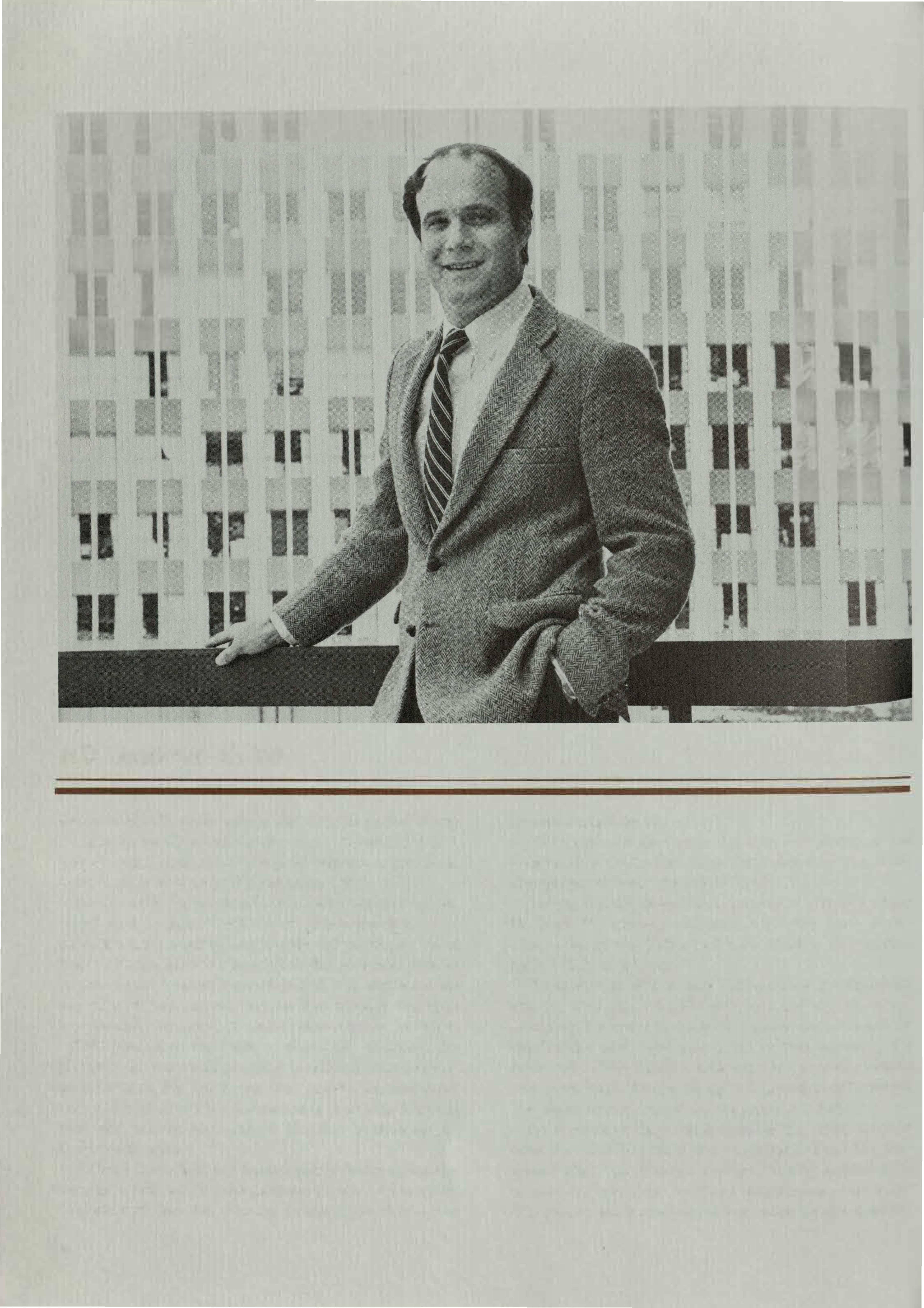
injustice has been done."
He points out that is is "nice to feel that you are wearing the white hat. In private practice, you don't always get to wear the white hat."
Jimmie Ray De Bose'74 andhis wife, Debra Jenkins De Bose '74, always planned to do pro bono work. They met at the School of Law, and were married before theirthird year.
"I came from Watts, and Debbie from the Compton ghetto, and our education was publicly financed, primarilybylowerandmiddleincomepeople,because they're the ones who pay taxes in this country," De Bose says. "We made a commitment that we would pay them back. We made up our minds that however life foundus, we woulddo something to help."
De Bose says they felt fortunate that they were in school at just the right time to benefit from the programs that the War on Poverty made available to minorites. "My older brothers didn't have those loans and grants available, and it was gone by the time my
Debra and Jimmie De Bose '74
younger siblingscame along," De Bosesays. "Wewere justthereduring that window when it was available.
"Wewere part ofthateraofsocially, politicallyconcerned students who worried about the environment and about the Vietnam War. It seems to me that you can either take a macro approach, and try to change the whole world, or you can take a micro approach and ask, 'How can I make my mark?'"
De Bose says theturning pointfor them camewhen theybothquittheirjobsandspentsixmonthstraveling in Europe and the United States. When they came home, in December of 1977, they began practicing together as De Bose & De Bose, handling real estate, personal injury, family law, and bankruptcy. TheyalsofoundedtheHarriet Tubman Legal Center, whichstarted out as a general legal assistance clinic before they discovered that it would be more efficient to specialize.
"The preponderance of the cases were domestic violence, sowe specialized inthat," De Bosesays. "We
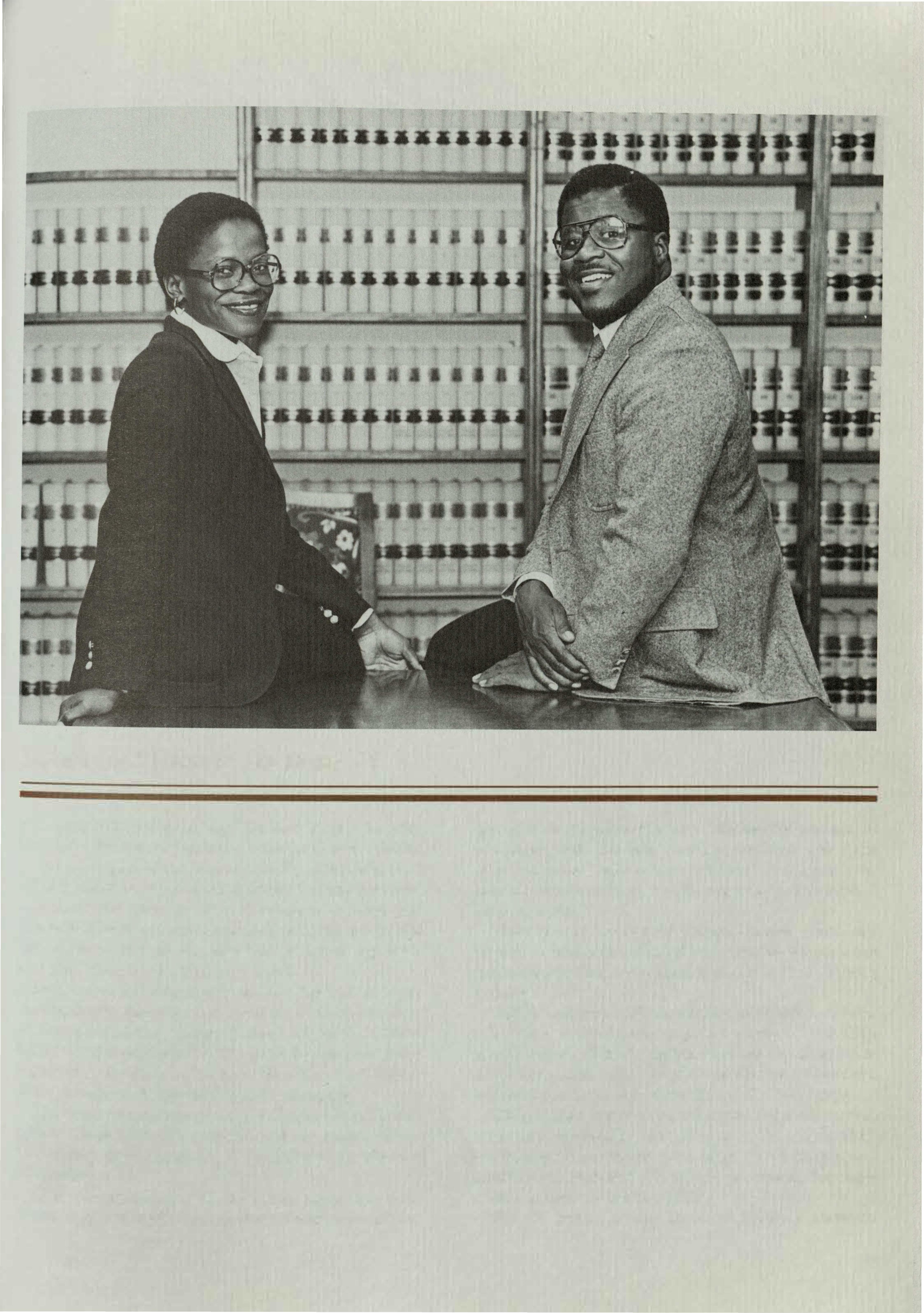
nameditafterHarrietTubman, becausesheisasymbol ofsomeonewho madeittosafety, andthentook risks to go back and help others, and that is appropriate, becausedomesticviolenceistheslaveryofthe 1980s," De Bose says.
Their clients are not all battered wives. Some are fathers, orhusbands, orneighbors, whoneedassistance inobtainingatemporaryrestrainingordertostopbeing a victim.
"We've had women from Malibu in jewels andfurs, who were embarrassed to go to a lawyer closer to home, and we've had parents who are afraid of their drug-using sons, who come home and beat them up, butrefusetomove out of the house," De Bose says.
WhenclientscomeintotheHarriet Tubman Center, sometimesreferredbythepoliceorbythecourts, they are seen by a paralegal, who takes down the appropriateinformaton andfillsoutthepaperworkforthem to take to courttoget the TRO.
The De Boses devote 10 to 15 hours a week to
Jonathan Kotler '70
reviewing the documents, butthey do not make court appearances. The clients are instructed how to go about representing themselves. De Bose is adamant about accepting no public money to fund the center, which isoperated on a smallbudget from donations.
Jonathan Kotler '70 saysthathehas never satdown to calculate how much time he spends on the First Amendment cases he pursues on behalf of the California Freedom of Information Committee, the Greater Los Angeles Press Club, and the Society of Professional Journalists.
"It runs in spurts," he says. "Months will go by withoutmy doing anything, andthenI'mupuntiltwo orthreeinthemorningworkingonamotionandflying up to get it filed with the Supreme Court before it closes."
Kotler, who majored in journalism before going to law school, says that he never gave any thought to public interest law while he was in school. "When I wasinlawschool,Ididn'tthinkaboutanythingexcept
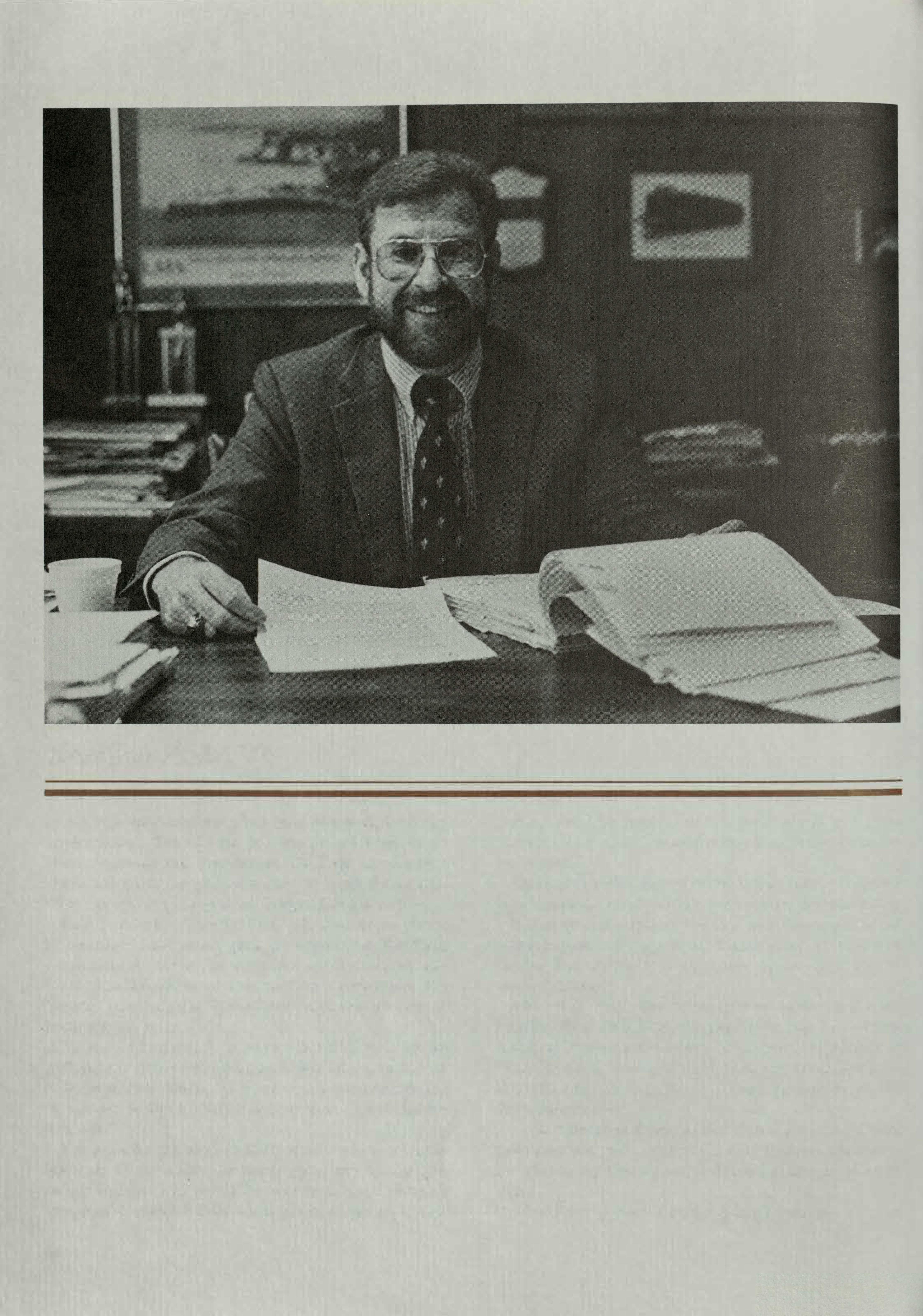
getting out," he says. "I didn't think about pro bono work. I justworriedaboutfinding aprofessionalniche for myself."
Onceinpractice, however, hebegantakingonpress freedomcases,andfoundthat otherlawyerssometimes felt that the interests of the bar and the news media were diametrically opposed. "Ihaveevenbeencalleda traitor for trying to keep courtrooms open to the media," he says.
His wife, Patti, the other half of Kotler & Kotler, handles their civil litigation practice while he is doing his First Amendment work. "With me, it is a labor of love," hesays. "Ienjoyitmore thananythingIgetpaid for. It's nice to charge into court on behalf of the First Amendment.
"Ido it because itneedstobe done," he says. "Doing probonoisitsownreward. I knowthatsoundscorny, butthisismy charitywork. It's whatletsmesleep at night.
"But I'd be lying if I said it wasn't fun." o
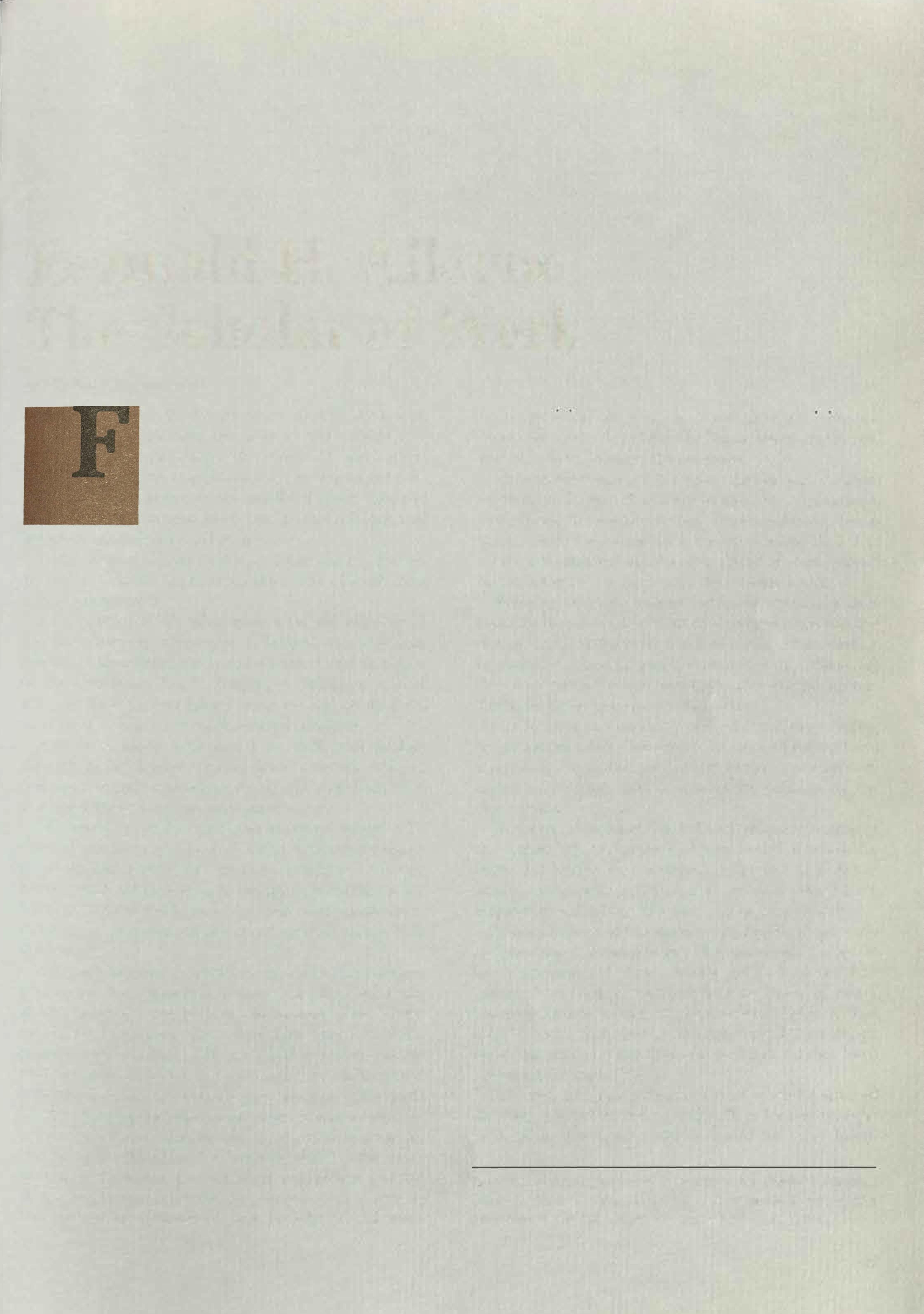
Reginald H. Alleyne: The Scholar of Work
by Rebecca Morrow
ram the outcome of collective bargaining ses'sions to the receipt of a paycheck, the world of work plays an important and ever-present role. Itconsumesone-thirdofourtimeand causes pride and pain, challengeand boredom, stimulation and stagnation.
UCLA Schoolof Law Professor Reginald H.Alleyne, Jr.,devoteshislifetostudyingtheworld ofworkfrom alegal perspective.
As a professor, an arbitrator, a former member of the Los Angeles Employee Relations Commission, National Labor RelationsBoardattorney,andchairman of the California Public Employee Relations Board, Alleyne, now 51, has heard cases on and studied the intricacies of a host of work-related conflicts.
And as a black who has seen, felt, and broken throughtheblockadesofracialdiscrimination,Alleyne hasalsoworkedasanadvocateagainstdiscrimination inemployment, housing, and other areas.
"We spend a third of our lives sleeping; we spend a third of our lives awake and doing things not related to work; and a third of our lives working," Alleyne notes. "With all that time being spent working, what happenstousatwork, andwhatour workingenvironment is, is just one of the most critical matters in our lives."
Alleyne'sinterestin labor lawaswell ashisconcern over racial discrimination in the work place had roots in his childhood. He grew up in Boston in the 1930s and 1940s, in an area where less than 1 percent of the population was black. Alleyne's father was for many yearsaunionshopstewardandhisfather'stalksabout collectivebargainingsessions,grievancesandhiswork for the union perked the young Alleyne's interest.
"My father was always talking about the things he wasdoingfor theunion," Alleyne recalls. "Atthesame time, over the years, he was always talking aboutthe things the unions and the employers were doing to him against his interests. Some days he would come
home praismg the unions, other days praismg the company. Somedayshewouldcomehomecursingthe unions, otherscursing thecompany.
"It was obvious over theyears that hewas a victim of various forms of discrimination in employment. Sometimes the employer was the perpetrator, sometimes the union, sometimes a combination. So I took onanearlyinterestinwhatthisworldofworkwas all aboutbecause it was soimportantto myfather."
ButAlleyne'searlyinterestdidnotautomaticallysteer himintohisprofession. Winnerofseveral trackawards andofagoldmedal inhighschoolforhisachievements inchemistry, Alleyneenrolled atTufts Universityand, despitea firstprize ina freshman essaycompetitionat Tufts, he choseto major in chemistry.
His interest in chemistry shifted completely during his junor year. His disinterest, he says, stemmed from a growing interest in people and in theemerging civil rights movement, which was in its infancy in the early 1950s.
However, Alleyne did not change majors because of the "times." "If the times had been better, a whole lot better for blacks with a degree in English or political science or economics, I'm almost certain I would have majored in something like that," he says in hindsight.
"Ithoughtitwouldbeclosetoimpossibletogetajob in those fields. I thought my chances would be better as a chemist. I don't know why I took that gamble," he adds, recounting how he knew of many blackswithsciencedegreeswhowerenot able tofind jobs. "Itoldmyselfthatby thetimeIgraduatedthings wouldbe changed. Butthatwas reckless. I didn't have anygreatforesight."
Alleyne's lifetook a dramatic turn when he entered the Navy. R.O.T.C. training incollegelanded him the rank of ensign upon induction and he soon found
Rebecca Morrow, formerly a reporter for the Los Angeles Daily Journal, is now editor of Los Angeles Lawyer, the magazineof the Los Angeles County Bar Association.

himself being sent to the School of Naval Justice in Newport,Rhode Island.
"The Navyhasahumorousnotionthatyoucanmake anybody anything after they go through a six-week Navy school," says Alleyne. "In a way, I admire the Navy's concentrated crash courses, but it gets a little ludicrouswhenyoutryinsix weekstoi°nakeamilitary lawyeroutofsomeonewhoneverattendedlawschool."
Nonetheless,theNavydidjustthatandAlleynefound himself back on his ship handling court martial proceedings on a part-time basis.A fewmonthslater, when the ship's legal officer was transferred, Alleyne was appointed to the full-time "legal" post.It was that experience, Alleyneconcedes,that sparked hisinterest in going to law school.
HeenteredHoward University'sLawSchoolinWashington, D. C.,in 1956 because he hadbeen "integrated" allhislifeandwantedtogotoaschoolwherehewould have more contact with other black students. At Howard,he was editor-in-chief of the law review.
"From kindergarten through high school, I was in classeswithoverwhelminglywhite student bodies," he recalls."Duringthat time,I saw onlyoneblack teacher, a substitute.
"I gained some insights about blacks that I didn't have before because of my havinghadso little contact during my school days and during the Navy, where I met only one other black officer during my two years of service.
'Tmgratefulforhavinghadboththetotalintegration experience of my childhood,undergraduate, and Navy days and of having attended Howard and gotten into themainstream ofblack civilrights affairs."
In the early 1960s, after graduating from Howard, Alleyne clerkedfor U. S.CourtofAppeals Judge Henry Edgerton, becoming the first black to ever clerk for a U.S. Court of Appeals judge inWashington,D. C.
"I did the usual thing," Alleyne explains. "I got my resume together and sent it off to the judges on the courtofappealsknowingthatnoblackhadeverbeena law clerk. And I was lucky. One judge decided it was time for a change."
Edgerton was a great civil libertarian, and Alleyne notesthatifEdgertonhadbeena Supreme Courtjustice, he would have voted with Justices Black and Douglas onmostissuesinvolvingcriminalprocedure,civilrights, and civil liberties.
''I've grown up in a very interesting time," Alleyne says. ''I've seen two worlds that most people would either be too old to have seen or too young to have seen."
In 1961,followinghisclerkship,Alleynemovedwith his wife, Delores, to Seattle. There he took a job with the Federal Contracts Compliance Office,ensuringthat
federal contractors were complying with government standardstorecruitandhireminorities.WhileinSeattle, Alleyne became very active in the Congress on Racial Equality,takingpartinpicketing,demonstrations,and sit-ins to eliminate racial inequities. "That's not really mystyle,"Alleynenotes, "but unlike now,the law then providedvirtuallyno remedies for discrimination."
In 1964,he moved to Albuquerque, New Mexico,to work as an attorney for the National Labor Relations Board. It was his father's influence that once again steeredAlleyne's career,thistimeinthespecificdirectionofan arbitratorandacademician."WhenIthought aboutbecoming alaborlawyer, because ofmyfather's experiences, I couldn't make up my mind whether I would ever represent a company or whether I would ever represent aunion.And it didn'tseemthatIcould comfortably do either. So I never really did."
Whileanattorneyforthe NLRB,Alleynewasnamed by the Federal BarAssociationasoneoffive outstanding young government lawyers in the United States.
In 1969, Alleyne received his LL.M. degree from Columbia University. Soon after,he accepted afaculty position at the UCLA School of Law. From 1975 to 1978,Alleyne tookayear'sleave to serve as avisiting professoratBostonUniversity'sLaw School.However, followingasemesterofteaching atBoston University, he was appointed by Governor Brown to the EducationalEmploymentRelations Boardin 1976andserved for two years as its chairman.
ProfessorAlleyneiscurrentlyinvolvedwithseveral communityorganizations,includingtheCitizensAdvisoryCommitteefor the LosAngeles Police Department, a group which appears before the Police Commission and gives suggestions on how the police department might be structured and run to improve relations between it and the community.
The committee is particularly interested in officerinvolved shootings and the manner in which these shootings are investigated by the department. The committee,withthehelpofAlleyne,wassuccessfulin changing the policy used by the department to interviewofficersregardingpolice-involvedshootings."The point we were trying to make in our testimony (of February 24, 1981) was, when officers are involved in a shooting, they should not be interviewed as a group so they can get their stories straight. They should be separated." The police department has now stopped its procedures of mass interviews of officers.
Alleyne has also been active as chairman of a blue ribbon Civil Service Reform Commission. Appointed by Los Angeles Mayor Tom Bradley, the commission hasbeen workingoverthelastyear-and-a-halftomake recommendations for changing the city's collective bargaining andcivilserviceprocedures.Withitswork
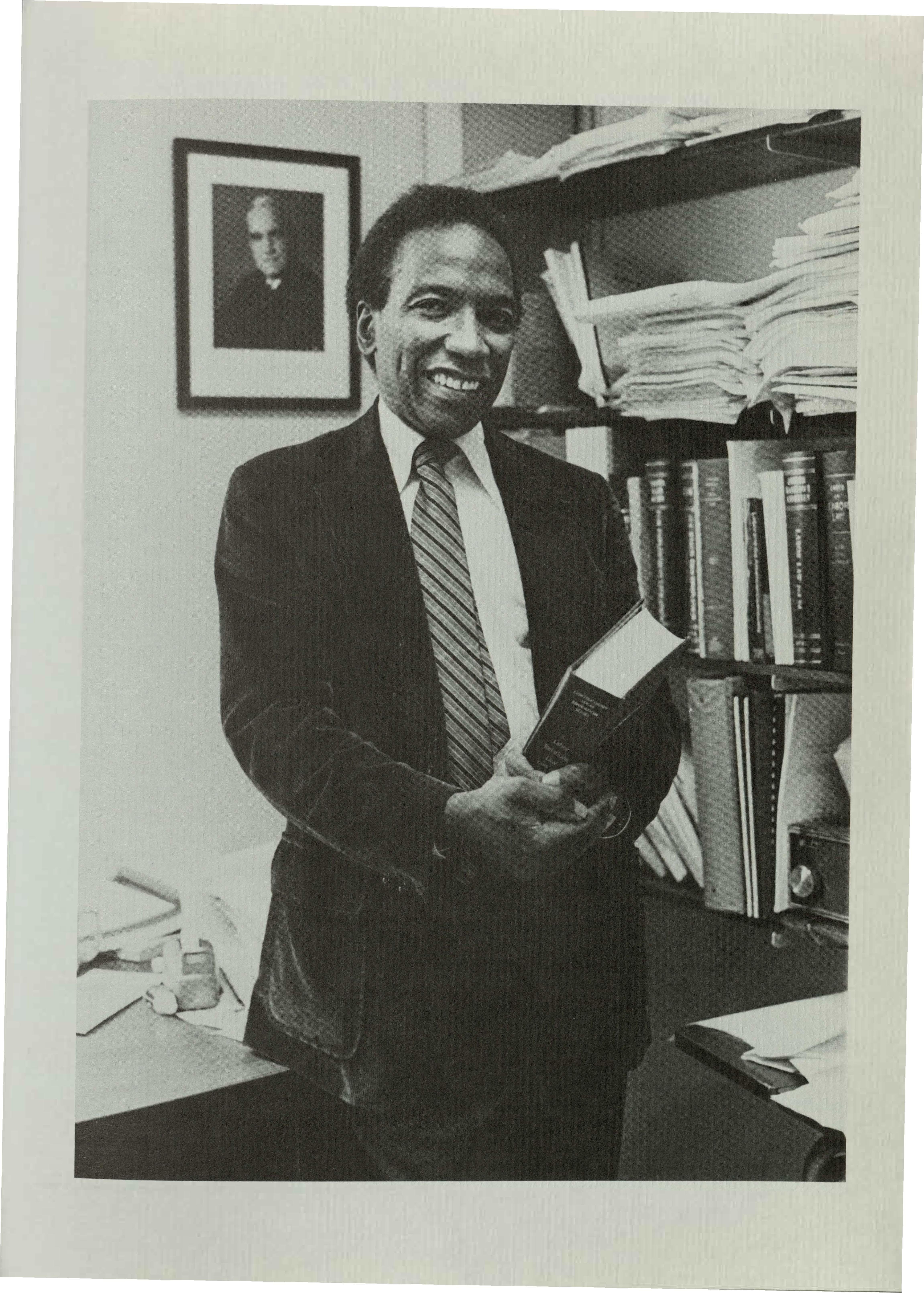
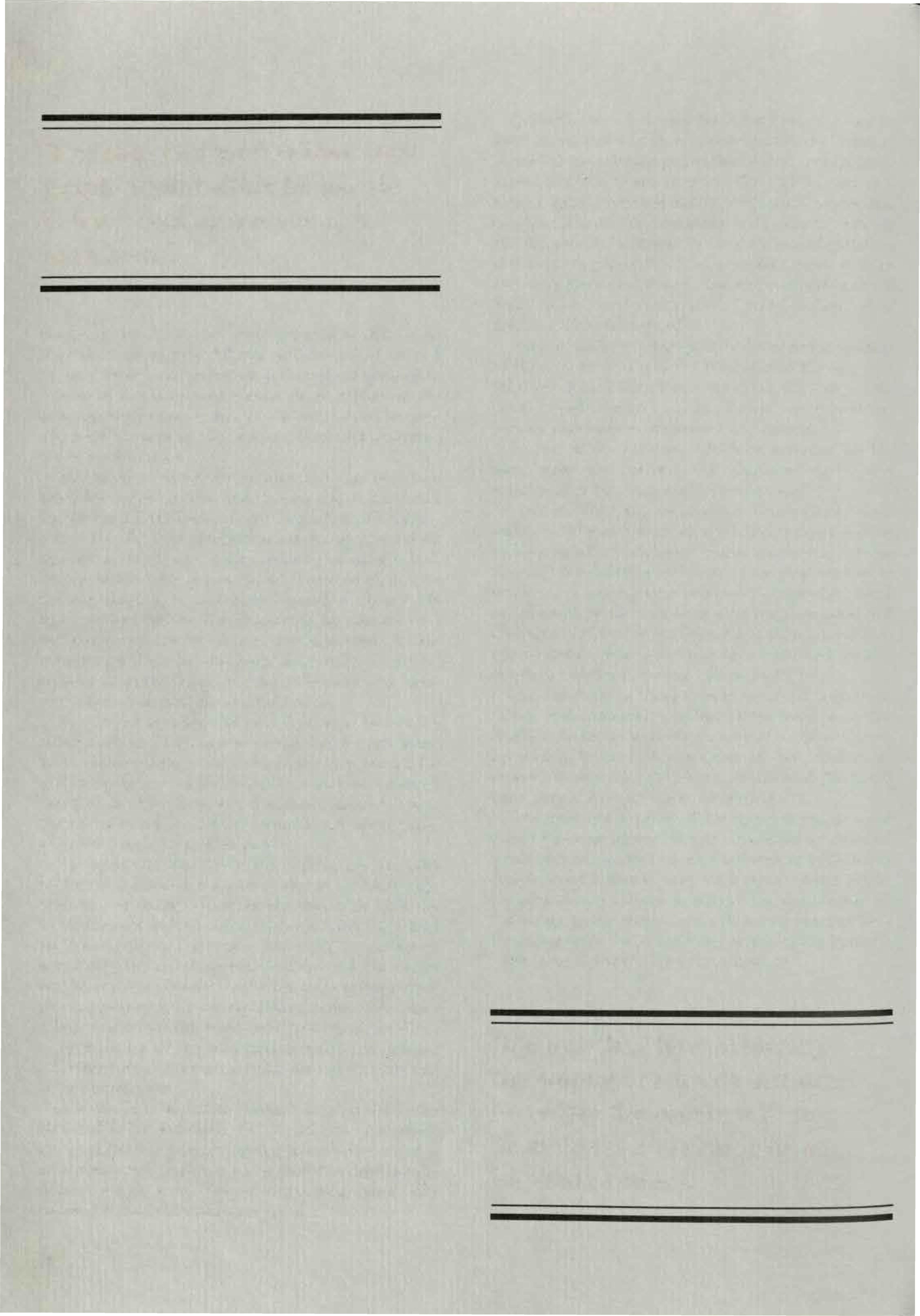
"I've seen two worlds that most people wouldeither be too old to have seen or too young to have seen."
complete, aspects of the proposed reform will be on the ballot this spring. Alleyne will be one of several persons listed as a proponentin the voter's pamphlet.
Alleyne hears numerous cases as an arbitrator. He is a member of the National Academy of Arbitrators andiswellknownasaformulatoroftrainingprograms for new arbitrators.
Alleyne is co-editor of two advanced case books on labor law-one entitled Individuals and Unions and theotherentitledCollectiveBargainingin Public Emp/oyement. The first covers grievances by an individual against a union and union security clauses which require individualsto joinunions.Thesecond,itstitle self-explanatory, is a favorite topic of Alleyne's. He has testified before the California legislature and written many law review and administrative law opinions on the collective bargaining rights of public employees,atopic,henotes,whichthe California legislaturehas addressed rather reluctantly.
As Alleyne testified before a California legislative subcommittee: "To a degree unmatched by any other state,California'sapproachtocollectivebargainingfor public employees has been cautious and incremental. Statutes in other large states authorizing public employee collective bargaining comprehensively covered all public employees,all at once.
"In contrast, the California legislature in 1969 conferred collective bargaining rights on local governments choosing to exercise the option; in 1976,the legislature authorized collective bargaining for school andcommunitycollegeemployees;in 1977,acollective bargaining bill covering state college and university employees was defeated and a bill authorizing collective bargaining for state employees (other than state collegeanduniversityemployees) wasenacted." Then, in 1978,thelegislature tookthelateststepandgranted collectivebargainingrightstoCaliforniauniversityand collegeemployees.
Alleyne points out in several articles how the National Labor Relations Act of 1935, the act which set up collective bargaining rights for private sector employees only, was used as a model in drafting the host of public employee collective bargaining laws passed by the California legislature.
California also followed the federal model when,in 1975,itestablishedaclosecounterpartto the National LaborRelationsBoard,calledtheEducational Employment Relations Board (EERB). The EERB acted as a neutralagencytodecideunfairpracticeandrepresentationcasedisputesforelementaryandsecondaryschools and community colleges.As the California legislature proceeded togrant collective bargainingrightstomore and more public employees,the responsibilities of the boardaswellasthename [now the PublicEmployees RelationsBoard) changed.
Alleyneholdstheprestigioushonorofbeingappointed the first chairman of the Educational Employment RelationsBoard. He,along with other membersofthe ?oard, weighed a host of complicated and conflicting mterests between management and unions.
Several of the opinions which he authored for the boardmakeclearthemultitude of interestsandfactors whichhad to be considered in every case.
In a case involving Sweetwater Union High School and two different unions that wished to represent the employees in two different bargaining units, Alleyne wrote,"Ithink thatineachcase ,wemustattemptto fashion a proper balance between the harmful effects on an employer of excessive unit fragmentation and theharmfuleffectsonemployeesandtheorganizations attempting to represent them of a large and insufficiently divided negotiating unit or units."
The weighing of those effects involved only those school and community college cases covered by the firstofCalifornia'sgrowingnumberofpublicemployee bargaining laws. As the number of the acts has increased to four and the responsibilities of the board have grown,Alleyne warns of trouble.
"Theexistenceofwidelydifferingpublicemployment collective bargaining interests, operating at different levels ofgovernmentinastate as largeandpolitically complex as California, may well assure that a single, comprehensive collective bargaining statute for all California public employees will not be enacted for a very long time," he wrote in an article in the January, 1980,issue of the Hastings Law Review.
"It's not clear how arbitrary the employer's treatment must be before the courts will say that this is a violation of an impliedcontract."
"The piecemeal approach of EERA, SEERA, and HEERA (thevariouspublicemployeecollectivebargaining acts) may prove counterproductive, particularly forunions. Moreover, eachnewdeparturefromearlier collectivebargainingenactmentsmayproducelitigation which will further complicate the tasks of the PERB."
Alleyne sees the increasing unionization of public employees as just one of the developing labor law issues of the 1980s. He notes that there are still large numbers of unorganized groups of public employees. "I think this will change and I think the collective bargaining model in the public sector, of necessity, willmovecloserandclosertotheprivatesectormodel," he says, "including the legality of the strike which is nowillegal for public employees."
ButAlleyneseesothermorestartlingchangesoccurring in the next decade, including:
Common Law Protection: "We're beginning to get a seriesofdecisionsbycourts,notbackedupbystatutes, saying that there is a right to be free from arbitrary dismissals by employers," saysAlleyne.
And this new common law doctrine is spreading. "But," he continues, "it's not clear how far it will go. It'snotclear,forexample,howarbitrarytheemployer's treatment of the employee must be before the courts will say that this is a violation of an implied contract ofemployment."
As an example of circumstances which have given rise to this doctrine, Alleyne cited an employer who firedanemployeefor refusingto violatethelaw. Until this doctrine, he adds, the only limitations on an employer in discharging employees were union activity, race, religion, nationality and veteran status.
"Nowthat this areais opening up, it raises allkinds ofinteresting questionsgoing farbeyondthematterof howfarthedoctrinecanbeextended.Italsohasserious implications for the union movement."
When unions organize employees, one of thethings they can do for employees is negotiate a grievancearbitrationclause,which,amongotherthings,protects theemployee against discharges "without just cause." Ifthenewcommonlawdoctrineisextendedfarenough, Alleyne says, then virtually all employees will have protection from arbitrary discharges and unions will not be able to cite "protection from arbitrary discharges" as a reason for union representation.
"Increasingly, I find priceless the academic independence to say whatyou think."
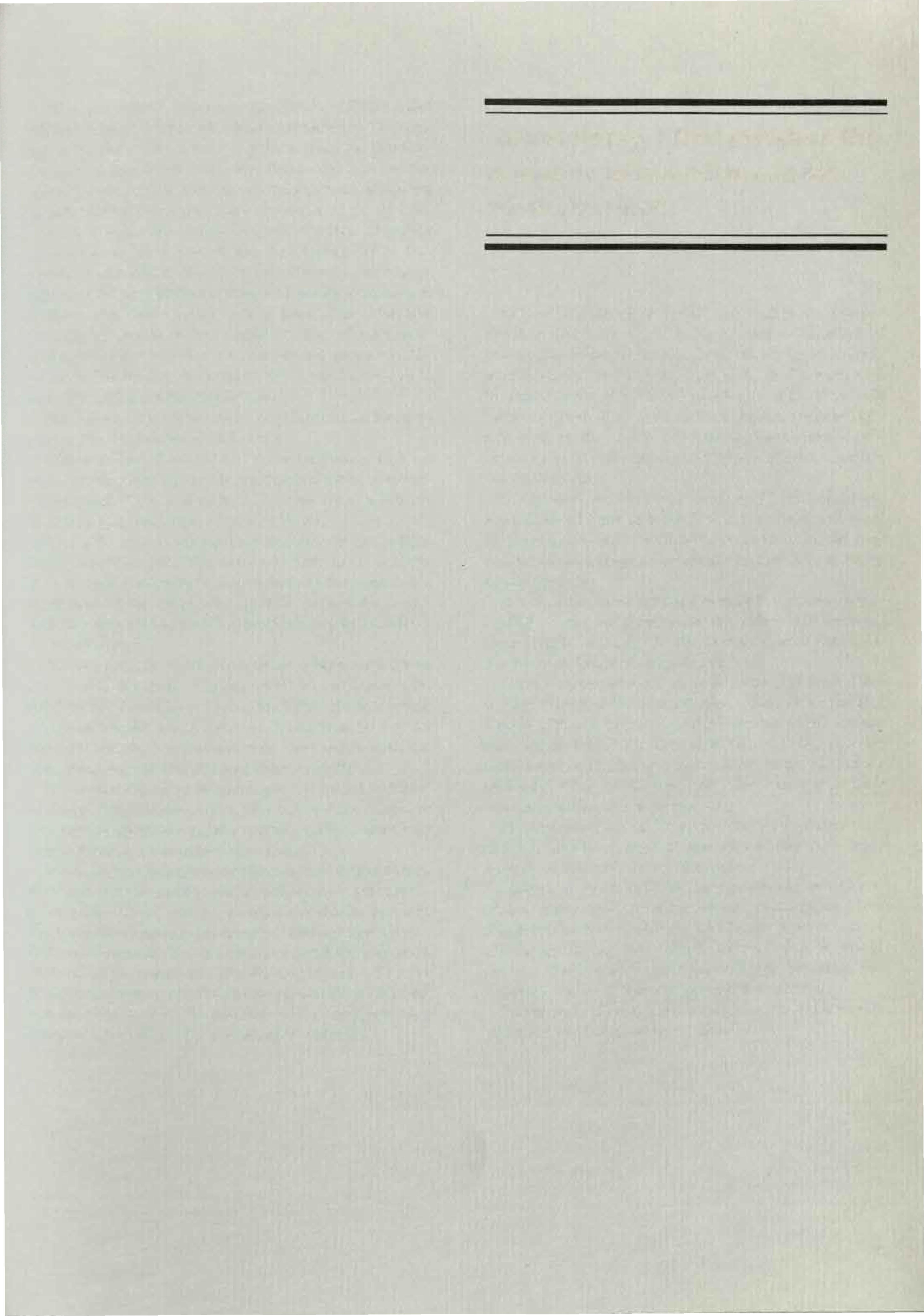
Societal Upheaval: Inthenext10to20years,Alleyne predictsthat society will beginto seethe full effect of the anti-sex discrimination laws which have already been passed. As a result of these laws, "women will becomemoreandmoreindependentofmen. They will beless reliant uponthemas they becomeincreasingly involved in the world of work at increasingly professionallevels." Eventually,Alleynesays,themarriage rate will decline.
Many women, however, may still want children, regardless of theirindependent status. "We will have to see what effect it will have on society in the long runwhensuchlargenumbersofchildrenareraisedby singleparents."
Arbitration: In an attempt toeasethe already overloaded courts, arbitration in the 1980s will be used increasingly, not only in the realm of labor disputes, but inotherkinds ofdisputes as well.
On the more personal side, Alleyne still finds time toplay classical flute nearly every day. Over the last coupleofyears,hehas foundfellow musicians among the ranks of UCLA's law students, usually playing with another flutist or a pianist. He is an avid skier and rides a bicycle almost every day, sometimes putting in20 miles in aweekendday.
He and his wife of 22 years are also raising four children:two boys, ages 21 and19, andtwo girls, ages 13 and11. His wifeis apediatrician.
Alleyne is quite fulfilled as a professor. As he explains:"Ilikedealingwithproblemsofthemind.I like tough intellectualproblems, andI enjoytheprocess of setting up in my own mind the way you go about solving them. And, increasingly, I find priceless the academic independence to say what you think.
"Learningisalmostanaddiction,"headds. "Ihonestly still get abig bang out of it." D
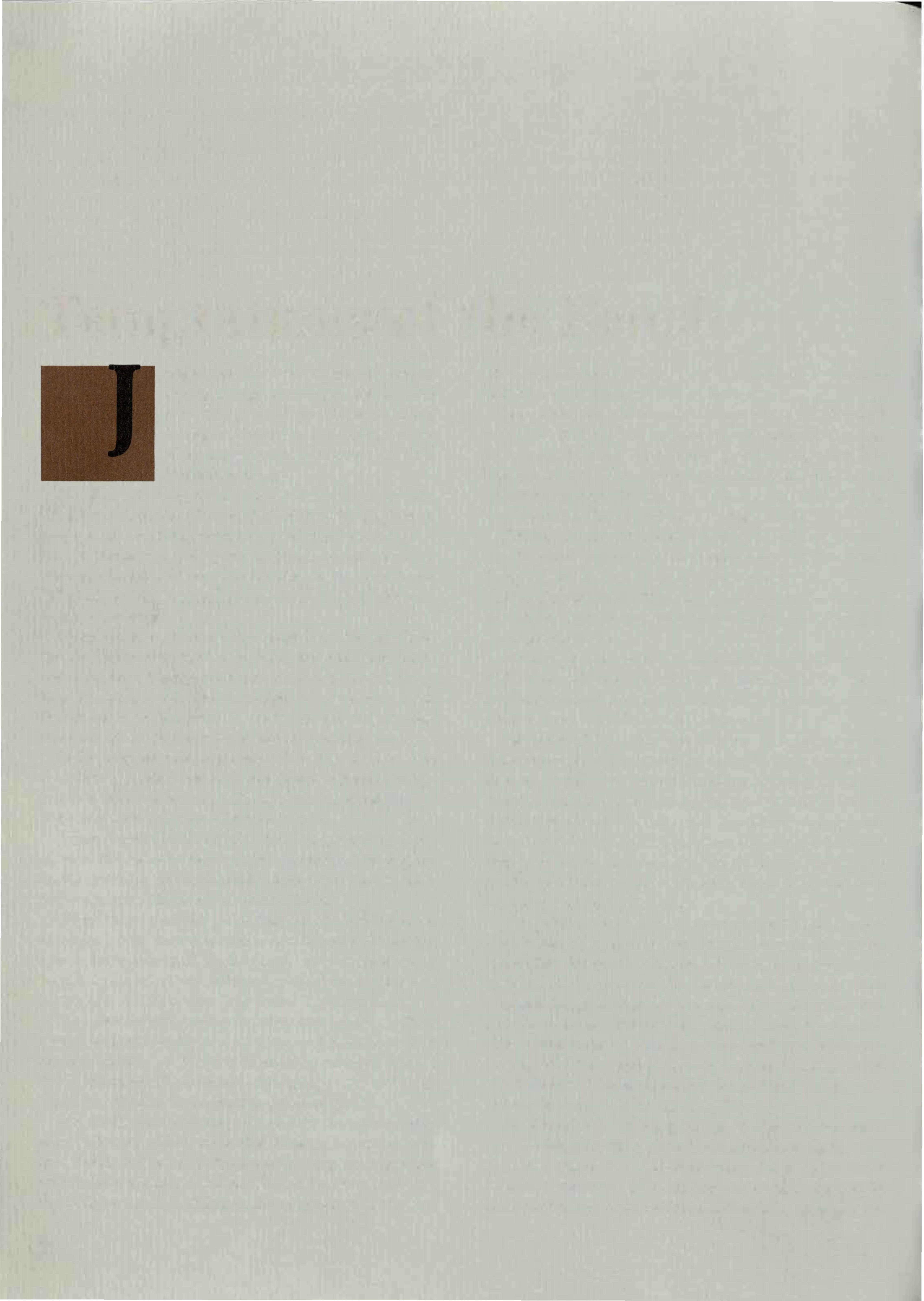
Temptations ofthe Bench
udges are like swans, gliding majestically along, seemingly serene and unruffled, yet all the while paddling madly underneath, according to one ofthehighest-rankingmembersofthe Englishjudiciary.
Sir Robert Megarry, Vice Chancellor of the Chancery division of the High Court of Justice in England since 1976, spent two weeks at the School of Lawin Januaryasa Regents' Lecturer,participatingin variousclasses and capping his staywithalecture on "The BusinessofJudging" [whichhesubtitled"Temptationsofthe Bench"].
Megarry, a member of the faculty of law at Cambridge University, where he edits the law quarterly, has written a highly regarded textbook, The Law of Real Property, and was described by Professor Jesse Dukeminier as "an erudite, witty, delightful, modest man; an equityjudge who isalso asuperbscholar."
Lady Meggary accompanied her husband to Los Angeles and filled her time attending lectures on linguistics and conferring with experts on dwarfism, a fieldinwhichshe specializes in London.
"There seems to be an idea floating around on both sidesoftheAtlanticthatanyonecanjudge," Sir Robert told a crowd of several hundred students and faculty memberswho attendedhis public lecture.
"They think that the judge has only to listen to two sides and thenchoose betweentwoschoolsofthought which have emerged. In England, quite a number of people feel that every tribunal should have on it one layman, to see that justice is done," Megarrysaid.
"The peoplewhomake thatstatementdon'tdotheir owntelevisionrepair or doctoring, but somehow they seem to think that judging is an easy process. Well, I flatlydisagree.The process ofjudging is not only difficult,but itcallsfor everythingyou've got."
Megarry'sobservationsarebasedon 15years'experience judging, and he says that looking back, he feels that the pathhas beenstrewnwithtemptations,upon which he elaborated. He has foundfive temptations: thetemptationofthetongue; thetemptationofthebar;
the temptation of brevity; the temptation of condemnation; and the temptation of humor.
HequotedSirWilliamAlexander,whosaid 150years ago that "nobody knows how muchenergy it requires in a judge to hold his tongue," pointing out that it is quite a strain, after one spends half a lifetime as an attorney, always talking, to suddenly be thrust upon the bench andbe expected to remain silent.
"When counselononeside isdoingwell,butcounsel on the other abysmally, the judge longs to help him," Megarry said. "But he must float majestically along, without a look ofdisdainupon hisface,while counsel putsonan appallingperformance as he goes abouthis lame presentation."
Megarry's own personal rule calls for rigid butnot inflexible self-control by the judge, avoiding interruptingcounsel,andnotquestioningwitnessesunless the attorney is still wet behind the ears.
He pointed out that the British judiciary has an advantage overits American counterparts,because it is easy to tell how experienced an attorney is by the color of hiswig."After 20 years,thewigshave turned a delicate shade of gray, and you know that he has been aroundforawhile,butwhenyou see adeadwhite wig, you know that he only bought it last week. You try to be a little tender with Mr. White Wig, and help him along as best you can."
If a judge does interrupt an attorney to ask a question, Megarry suggests getting him back on course by "repeatinghispointinhisownwords,tolethimknow you got it. Sometimes the judge says it better than counsel did, and then he can say, 'Your Lordship has put the point far better than I can,' " Megarryrelated. "But sometimes he gets it wrong, and you can't say, 'My Lord, you've got it wrong,' so you put it in code: Tm indebted to your Lordship for puttingitthat way. If I might suggest a revision ' "
In discussing the temptation of the bar, Megarry took as his text the words of Chief Justice Earle, who said 170 years ago that it is "easy for a judge to be impartial between plaintiff and defendant (indeed he is almost always so) but it is difficult to be impartial
betweencounsel andcounsel."
Judges must sometimesmake allowances fortheinequalabilities of opposing counsel, Megarrysaid,and sometimes must even assistthe less competent ones.
Hetoldofanattorneywhoaskedthejudgeonwhose behalf he had interjected a question. " 'If it is put on behalf of my adversary, I object,' the attorney said, 'and if it's on my behalf,I withdraw it.' "
Megarryadvisedattorneystogettheircasesontheir feet on the merits before turning to the law, urging them to "always get the judgewanting to find inyour favor before you tellhim the law."
Healsocautionedagainstbeingtoobrief."Sometimes theshortcutinjuresthemostimportantpersonincourtthelitigant who is going tolose," Megarry said. Although the judge doesn't know when the case begins which side will lose, he must always bear in mindthatthe case mustbeconductedsothattheloser understands why he lost, he said. "It's important to sendthedefeatedlitigantawayfeelingthathehashad
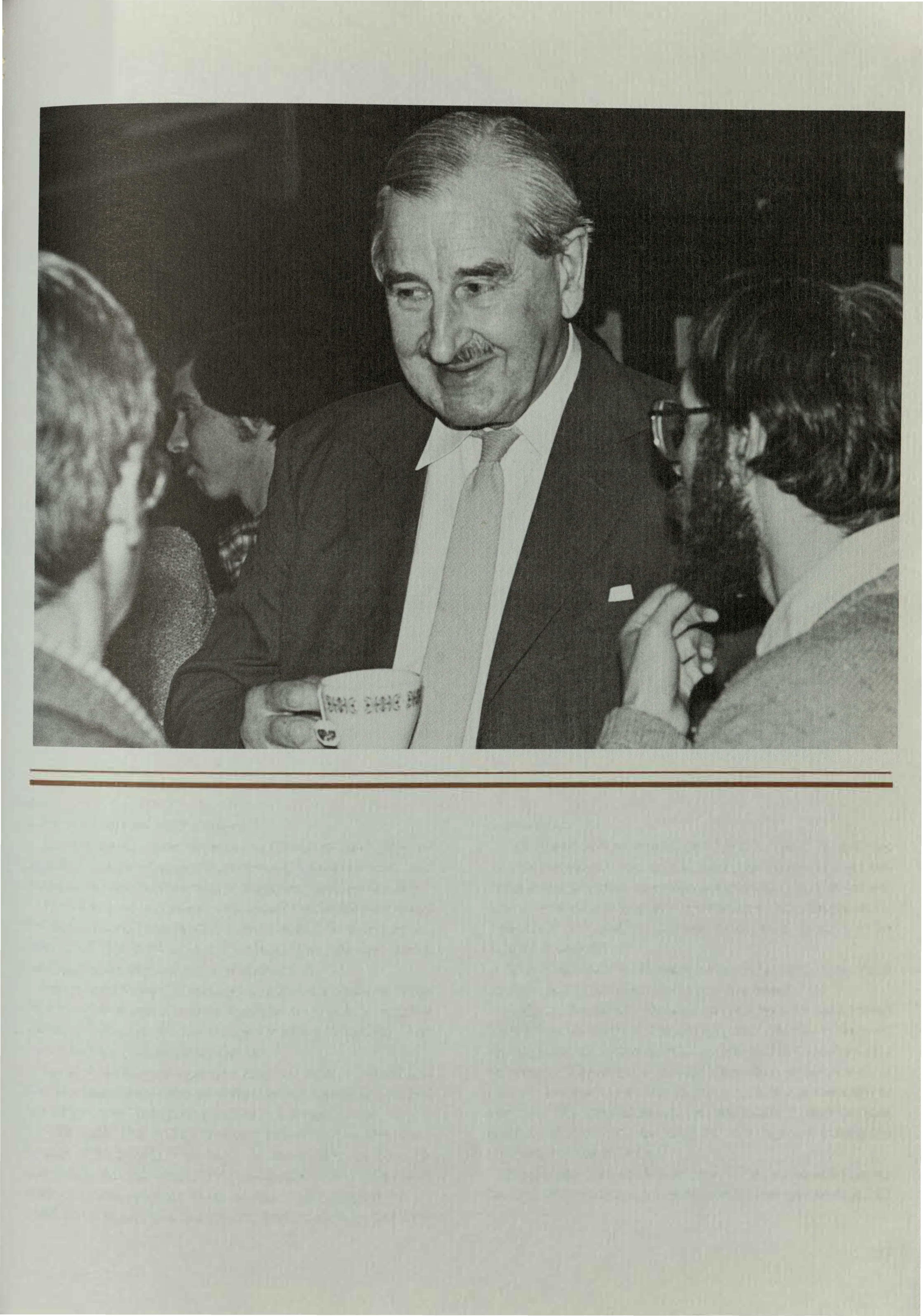
a goodrun."
He urged judges not to succumbto the temptations of condemnation by commenting unfavorably on the reliabilityofwitnesseswhoarenotpartytotheaction, norto use wounding words, suchas "liar,degenerate, besotted, a fraud, a whiner, hypocrite, grasping, or empty-headed."
The English, Sir Robert said, "like their law dull, and do not wanta humoriston the bench.''
Judges, he said, should not engage in contrived humor, especially not making puns on the names of the parties, and should never deliver their judgments in verse. "The parties should feel that every word is chosen because it is the right one, andnot because it rhymes," he pronounced, recommending that judges confine themselves to "slightly outrageous examples to cheerup thetedium.''
Finally,heofferedthisadvice: "Thelawshouldnever bedull.Interesting andanguishing, but never dull." D
News
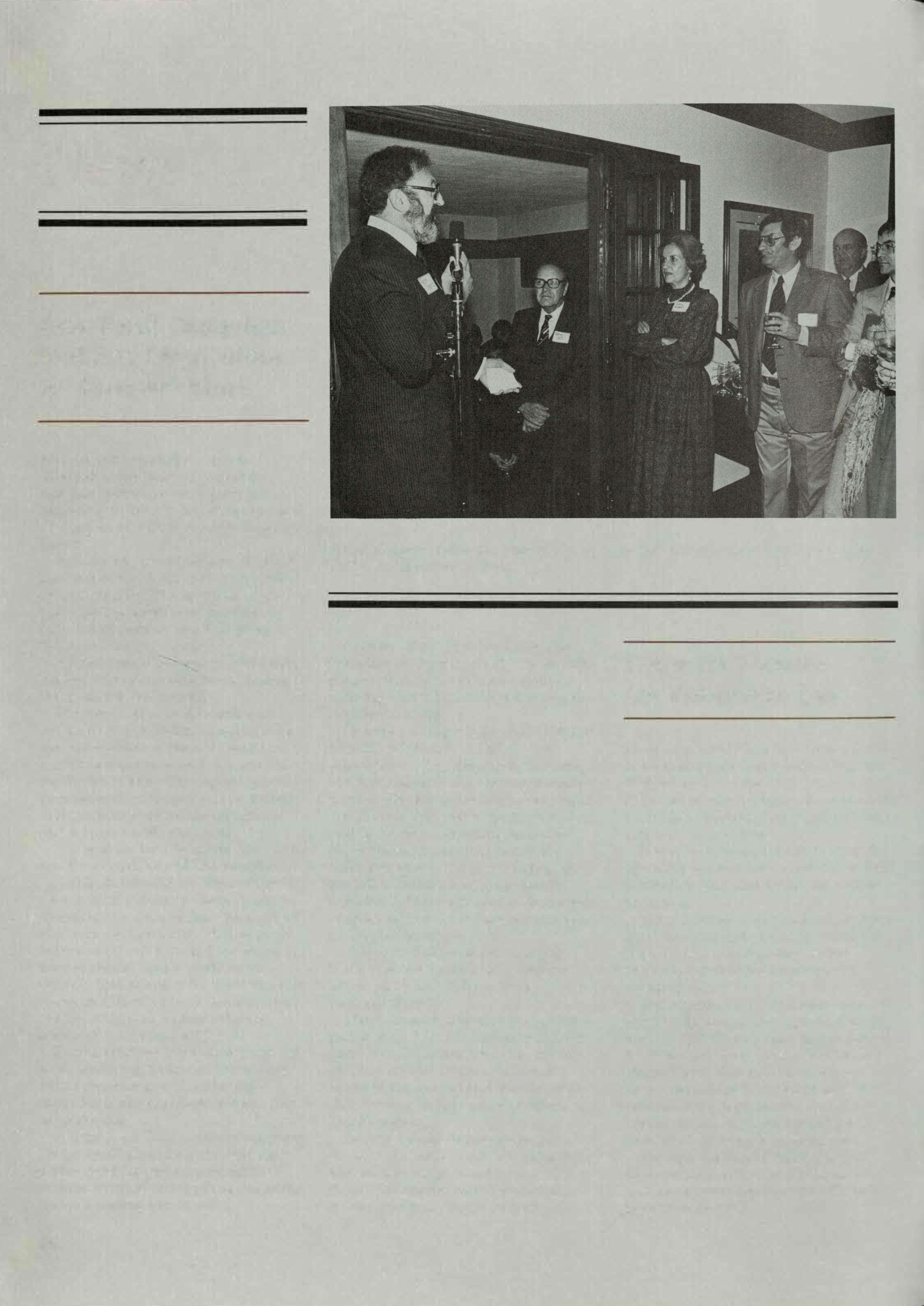
Law Fund Campaign Building Momentum
At $300,000 Mark
Alumni and friends have given $300,000 to the Dean's Fund already thisyear, with another three months remainingin the 1982-83 campaign and atotal goal of $450,000 as the targetfor June30.
Byearly March, 14 percent of UCLA lawalumnihad joined this year's effort by making gifts. The numbers ofalumni participating have risen significantly fromthe 12 percent who had given at the same time a year ago.
Alumnicampaignleadersnotedthat thekey to successmust be increasing the extent of participation.
Therehave also been significant strides in The Founders campaign. As the initial phase of the new program came lo a close on March 4, some 150 alumni had joined this support group, each committed to give at least $10,000 to the School over the decade ahead, and at least $1,000 each year.
The goal setfor December, 1983, is to enroll200membersof The Founders.
Ralph Shapiro '58, co-chair of the Dean's Fund Advisory Council, voiced optimism in reviewing this year's level of alumni participation. "Although we have along way to go in broadening the base of alumni involvement in our School," Shapiro said, "it is encouraging to see that there's a very definitetrend ofmoreand more alumni who are taking an active interest."
Representatives from classyearsare now continuing their contacts among fellow graduates, with follow-up activities including phone-a-thons and letterwriting.
A letter from Dean Susan Westerberg Prager to all alumni emphasizes the urgent need for private support to maintain UCLA's strength as oneof the nation's leading law schools.
Cathy and Kenneth Ziffren.
Marvin Juhas'54, who chairs The Founders campaign, noted that this new group will helpverysubstantially in buildinga baseforcontinuedstrength in years to come.
"We are enormously pleased that 150 alumni and friends of UCLA's law schoolhavetaken this far-sighted step and have made theirpersonal commitment at The Founders level," said Juhas.
Names of thisyear's charter members will be inscribed inmarble and displayed permanentlyjust inside the mainentranceofthe lawbuilding, on the brick wall leading to the central corridor.Addedeach year to the marble plaques will bethe names of Founders joining in the future.
A festive dedication ceremony is being plannedforthis fall when the initialyear'sinscriptions have been completed.
The Founderscampaign was given a major boost in December, when Cathy and Kenneth Ziffrenhosted a special evening at their Brentwood home. Many of the alumni and friends present that evening have become members of The Founders.
Among the charter year memberships, there arenot onlyindividuals but alsomembershipsin the names of law firms. The charter members include alumni and non-alumni as well.
Program Focuses On Women in Law
More than 180 UCLA law alumnaeand women students heard Judge Mariana R. Pfaelzer '57of the U. S. District Court when she spoke on "Real Women Do Become Partners" o.nApril4 at the James E. West Center.
It was an evening forcelebratingthe advances women have made in the legal profession, and also a time for serious reflection.
Judge Pfaelzer noted that while there have been concrete gains by women in the law, it is also true that issues encountered decades ago often are repeated today.
Nationwide, in 1970 women comprised3 percent of the legal profession and by 1982 that number had increased to 10 percent. Dean Susan Westerberg Prager noted that at UCLA, women have constituted between 35 and 36 percentof thefourmostrecentgraduatingclasses. Womencomprised41 percent of this year's entering class.
Perhaps the most remarkable fact, however, is that half of all the nation's women lawyers have entered the profession since 1978.
Ralph Shapiroaddressesalumni during a specialevening at the Brentwoodhomeof
Moot Court team members Janet Sobel, Penny Costa, and David Bridgeford shared highest honors in this year's competition.
Moot Court Team
Enters National Competition Level
Thisyear's Moot Court team shared the highest honors in the Western Region Moot Court competition inSan Francisco last November, and advanced to thenational competition in New York in January.
The UCLA team of David Bridgeford, PennyCosta and JanetSobel and the Hastings team won highest regional honors,both qualifying in theSan Franciscomeet to proceed to the national rounds. UCLA also won the bestbriefaward in theSan Francisco competition.
At the 33rd National Moot Court Final Rounds in January, UCLA's �ational team advanced to the quarter finals. The nation-wide competition, sponsoredby theAmerican College of Trial Lawyers and the YoungLawyers Committee of New York, involved teamsfrom 157 law schools. Only 28 teams advanced to thefinal rounds. The two days of oral argumentsin
San Francisco included afield of 14 teamsfromlaw schools ofCalifornia and Hawaii.
In thefinal rounds tournament, UCLA's team advanced to the quarterfinals where New York University emerged the winner, also going on to win the tournament. The UCLAteam's brief was ranked fifth in the nation,and willbeincluded in a nationalhandbook used by the Moot Courtprogram.
UCLA's MootCourt program selected its three-member national team from more than 180 second-year students competingin the Roscoe Pound tournament. In the first semester, students wrote a 35to 40-page brief and argued twice.
Judgesfor last spring's tournament includedCaliforniaSupremeCourt Justice Otto M. Kaus, U. S. Court of Appeals Judge Harry Pregerson, and U.S. District Court Judge Robert M. Takasugi.
JudgeAmalyaL. Kearse of the U. S. Circuit Court ofAppeals, second circuit, who participated as a judge for the New York Final Rounds, also is judging this spring's Roscoe Pound tourney at the School of Law and participatingin selecting next year's UCLA team. Other judges for the tournament are Justice Allen E. Broussard of theCalifornia
SupremeCourt and Chief Judge William Wayne Justiceof the U.S. District Court, easterndistrict of Texas.
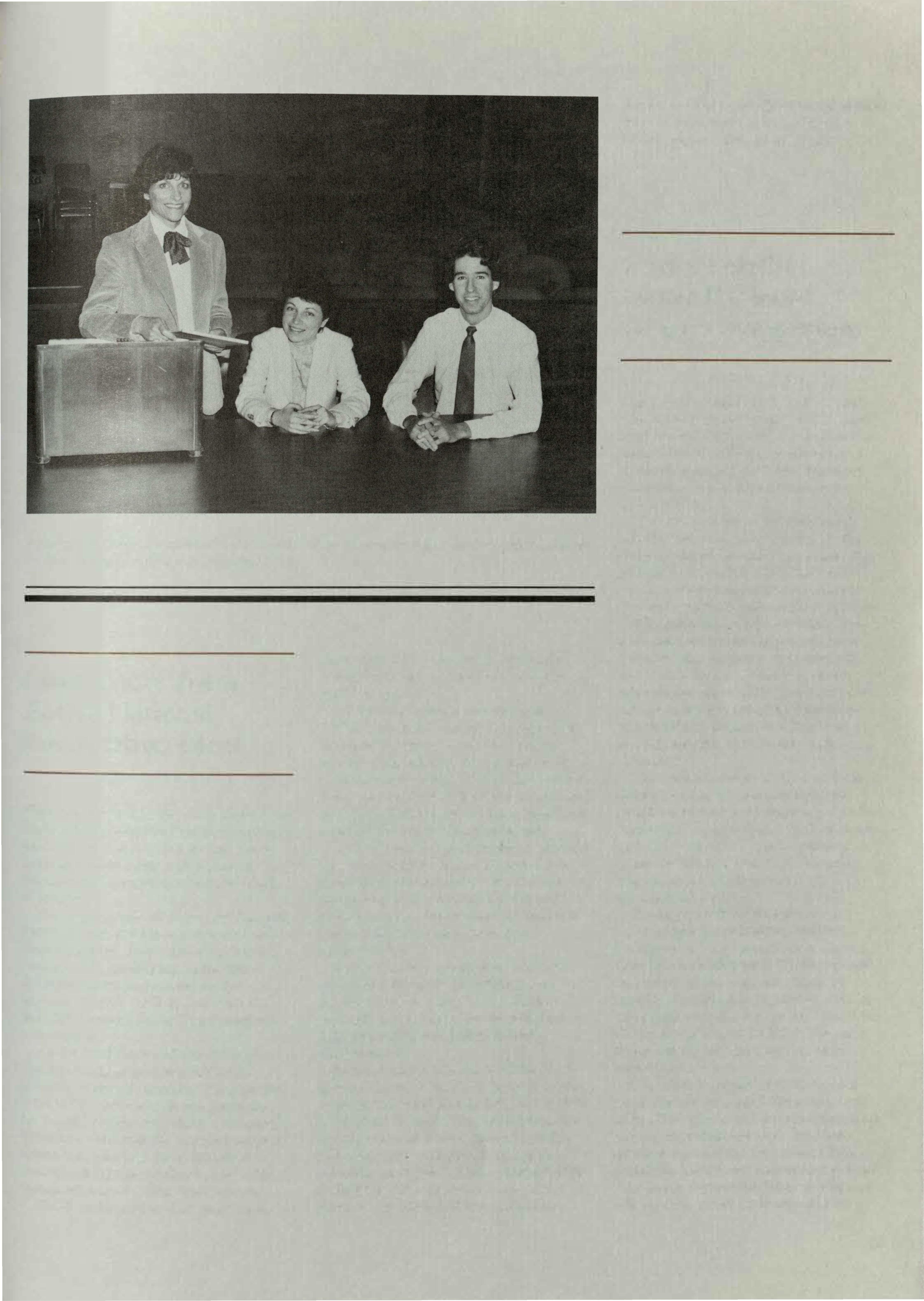
Sticky Satellite Issues Explored At Law Symposium
Legal issueswhichhave barelybeen conceivedby most people wereexamined indepth by world experts on the international delivery of television programming at UCLA'sThird Biennial Communications Law Symposium in March.
Thesymposiumon international satellite television, sponsoredby the International BarAssociation and the School's CommunicationsLaw Program, attracted some 160 attorneys, students, and entertainment executives. It became clear that satellitespose someserious threats to harmonious internationalrelations,especially for the UnitedStates. "This is an area where legalissues stillhave to be discovered and developed and are in no way settled," commented Professor Arved DeringerofCologne, West Germany.
"Theproblemis soseriousand our dependenceupon communications satellites so realas torequirea careful balancing of ournational and ourinternational objectives," said Veronica Ahern, a Washington, D.C. attorney specializing ininternational telecommunications.
Speaking to the symposium via satellite from Washington, Federal CommunicationsCommissionChairman Mark Fowler said: ''I'd like to see flexibilityin theway international satellite television is regulated. Domestic satellite servicehas proved itself in the marketplace, and I think the same thing can besaidfor international satellites."
Canadian MinisterofCommunications Francis Fox used the symposium as his firstplatformfor explainingCanada'scomprehensivenew broadcast, satellite,andcabletelevision policies which he hadissuedearlier in the week. Western nations and thedeveloping world often areat odds on satellite
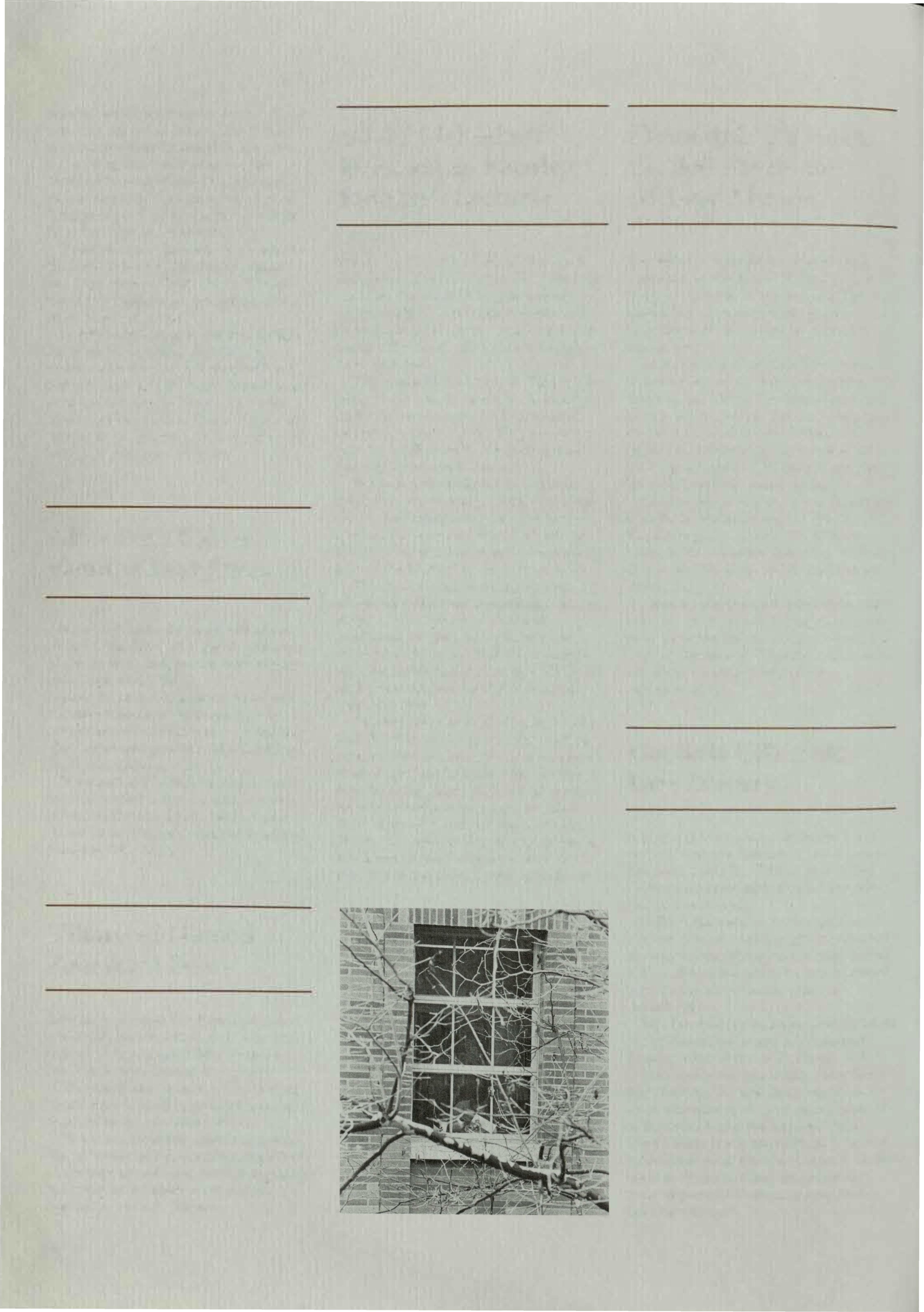
issues, and at the center of the controversy is theInternationalTelecommunications Union (ITU), a156member specialized agency ofthe United Nations, which FCC Commissioner Henry Rivera acknowledged is "beginning to fray and unravel alittle" after 51 years of existence.
Speakersand panelists at the March conference included industry leaders and legal experts from the U. S., Germany, Great Britain, the Netherlands, Japan, and Australia.
A 400-page resource manual,which includes background documents, articles and data, is still availablefor $50per copy.Audiotapes ofeachday's sessionsarealso available.To order copies, write to Doris Davis, Communications Law Program, UCLA School of Law,Los Angeles CA 90024.
Alumnus of Year Nominations Open
Alumni are invited to make nominationsfor the School's annual Alumnus of the Year award, which will be presented again this fall.
Law AlumniAssociation President KennethClayman '66urges a wide participation byUCLA law alumni in the nomination process. The deadline for nominationsis May 30.
Nominations, which can be inthe form of a brief letter, should be submitted to Bea Cameron, Law Alumni Association, UCLA School of Law, Los Angeles, CA 90024.
Villarreal Named Assistant Dean
Idarmis Villarreal has been appointed assistant dean-administration for the School of Law, succeeding Frances McQuade, who retired last year.
Villarreal has been at UCLAfor ten years,first in staff personnel and more recently in theplanning office.
In her new position, she is responsible for continued space planning efforts of the law school, long-term budgetary planning,and liaison with and development of the law library.
David Mellinkoff Honored
as Faculty Research Lecturer
Professor David Mellinkoff has been selected as the UCLA Faculty Research Lecturer for 1982-83 by his colleagues in the campusAcademic Senate, and gave the annual lecture April 14 on the topic, "The Myth of Precision and the Law Dictionary."
The annual lectureshipis the highest honor bestowed by theUCLA faculty, and is inrecognitionof distinguished research achievement. This year's lecture by Mellinkoff is the 58th annual Faculty ResearchLecture.
Professor Mellinkoffs most recent book is Legal Writing: Sense and Nonsense, publishedlast year by Charles Scribner's Sons andWest Publishing Co. It is his third book since Mellinkoff joined the UCLA law faculty in 1965.
The recent book is a direct offspring of Mellinkoff's classic work of scholarship, The Language of the Law, published in1963.In his latest book on legal writing, Mellinkoff pinpoints specific flawsinthe language of the law and gives suggestions forcorrecting these problems.
"We are all creatures of habit," Mellinkoff reflects, "lawyers more so than anyone else. IfI can get the next generation of lawyers imbued with the notion that legallanguageneed not be written as if lawyers had broken arms, then there is morechanceof improvement. Habit can mean that yourely either on the habit of good writing or bad writing. I'm trying to make it a good habit."
Kenneth I. Clayman Elected President Of Law Alumni
KennethI.Clayman '66 waselected president of the board of directorsof the Law Alumni Association at the December 15 meeting. He succeeds Fred Leydorf '58 whose term ended December 31.
Five new directors were elected to a three-year term. They are Marilyn Freytag '58, Laurie Levenson '80,Carol L. Mayall '81, Judge Veronica Simmons McBeth '75, and Robert Ruben '64. Sidney R. Kuperberg '52was electedto a two-year term to fill the vacancy left by Fred Leydorfs resignation.
Continuing members of the board are Don Mike Anthony '63, Ed Landry '64, Kathryne A. Stoltz '73, William Vaughn '55, Lourdes Baird '76, William Gould '63, Elwood Lui '69, and Leland Stark 72.
Officers elected at the December 15 meeting are Kenneth I. Clayman, president; Lourdes Baird, vice president; Ed Landry, treasurer; William Gould, secretary; and Leland Stark, alumni representative.
Garcetti Gift Aids Law Library
A major gift for the internationallaw collection at the School of Law library has beenmade by Gilbert and Sukey Garcetti and the Roth Family Foundation of Los Angeles.
Gilbert Garcetti, a 1967 alumnus of the law school, said the giftis intended to enhance the library collection during a time of major growth ininternational law studies now taking place at the school.
The law library has beenidentifiedas one of the major needs in continued development of the law school.
"The generous gift of the Garcettis and the Roth Family Foundation demonstrates their continuing support of the school and the library," said Dean Susan Westerberg Prager. "It is a splendid example ofthe essentialparticipation by alumni and friends in the most important aspects of our educational program."
Classnotes
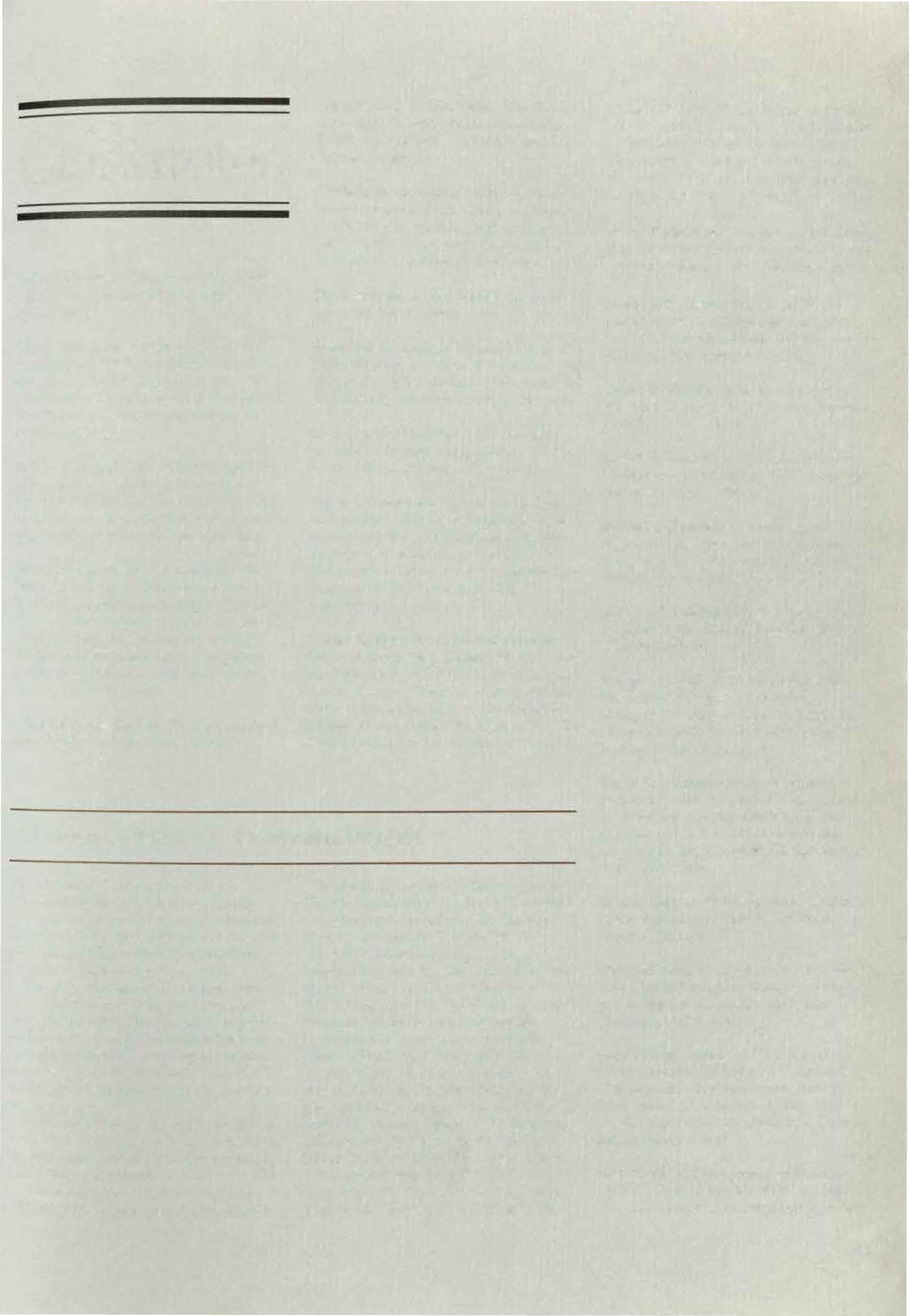
Marc Alexander '81 has become associated with the law firm of Irell and Manella.
Susan Marchant Angel '81, after clerkinglastyear for Judge Joseph Sneed of theNinthCircuit, has associated with McCutchen, Doyle, Brown & Enersen in San Francisco. She is specializing in estateplanning.
Robert P. Appelgate '76 has merged his solopracticewith the partnership of Green & Appelgate. Thefirm is located indowntown Los Angeles and specializesin immigration and criminal law.
JulianW. Bailey, Jr., '74 and James W. Brott'72have dissolvedtheir former firm and are now practicing in Tustin. Thenew firmname is Bailey and Brott. Theycontinueto emphasize criminal defense and personal injurylitigation. Bailey is also a referee in the Orange CountyJuvenile Court.
Leland Eugene Backus '72 is a principal shareholder in Thorndal, Backus &
Maupin, Ltd., inLas Vegas. Thefirm specializes in construction, products liability, insurance, corporate, and other defense litigation.
Willie R. Barnes '59, senior partner of Manatt, Phelps, Rothenberg & Tunney, has been appointed general counsel of the UCLA Alumni Association and a member of itsboard of directors.
Thomas Bliss '82 has joined the Directors Guildof America.
Frederick W. Clough '68 has become a partner inthe law firm of Schramm and Raddue in Santa Barbara. Previously he was the city attorney of Santa Barbara.
John Marshall Collins '72is general counselof Unuson Corporation, US Festival. Offices are located in San Jose.
Bruce J. Croushore '72 was named general counsel of Bender Shipbuilding & Repair Co., Inc., with offices in Mobile, Alabama. In addition to handlingthe company's legal matters, Croushore has responsibilities in finance and marketing.
L. Morris Dennis '64, Lucinda Dennis '65, and Thomsen J. Young '74 announce the formation of the law firm of Dennis, Juarez, Reeser, Shafer & Young. Among the associatesof the firm are David H. Miller '78 and Robert W. Barnes '80. The firm's offices are located in Los Angeles.
Alumni Advisory Program Begins
An Alumni Advisory Program established by the UCLA Law Alumni Association gives first-year students an opportunity to meet, ask questions, and gain insights from alumni whileformingfriendships at the same time.
The program has as its purpose oneto-one communications between student and lawyer. The format is flexible anddetails are workedoutby the individuals involved. This program is not intended as a job placement vehicle, and itplacesno obligations on lawyers ortheir firms.
Sixty-six students have scheduled to meetwith42 attorneys in the program's initialphase. Alumni who have participatedalready include:
Susan Amerson'71, Rudy Aguirre '78, Don Mike Anthony '63, Jim Barrall
'75, Marilyn Barrett '77, Ken Clayman '66, Cornell Chulay '81, David Dizenfeld '74, Barclay Edmundson '79, Charles English '65, Buddy Epstein '74, David Epstein '78, Ralph Fertig '79, Judge Hiroshi Fujisaki '62, Jan Gabrielson '69, Judy Gelfand '69, David Glickman '57, Steve Glickman'82, Bill Gould '63, Herb Graham '80, Feris Greenberger '80. Jerome Goldberg '53, Larry Guzin '72, Rhonda Heth '80, Dennis Hill '66, Martin Horn '54, Fred Kuperberg'66, MosesLebovitz '75, Jerry Mandel '71, George McCambridge '73, Judge Billy G. Mills'54, Hermez Moreno '76, Prentice O'Leary '68, Rick Runkel '81, Matthew Saver '78, Ron Slates '68, Leland Stark '72, Marjorie Steinberg '75, Gary Stiffelman '79, Kathy Stoltz '73, Foster Tepper '62, Michael Van Eckhardt '80.
Donald H. Dye '67 and Roger A. Luebs '77, formerly partners of Reid, Babbage & Coil, have formedthe firm of Dye, Thomas & Luebslocatedin Riverside. Emphasis willbeon business and real estate law andrelatedlitigation.
David Faustman '78 isnow inLatham & Watkin'sSan Diegooffice, wherehespecializes inlabor andemployment law.
Samuel N. Fischer '82, Adam H. Kurland'81, andJeanne M. Wong '82 havebecomeassociatedwith the firm of Mitchell, Silberberg & Knupp.
James R. Franks, II'66 was recently elevated tothe Orange County Superior Court.
Lee Friedman '80 ison a fellowship at Georgetown University. He is lecturing and working on a Ph.D.
Barrell J. Fuerster '67 hasbeen appointed a state inheritance tax referee, soon to beredesignatedprobate referee, for San DiegoCounty.
Richard I. Gilchrist'71 has become a member of thefirmof Thomas, Shafran, Wasser & Childs.
Douglas C. Gillies '72announcesthat the firm of Swaner & Lesliehas changed itsname to Swaner, Leslie, Flenniken & Gillies. The offices are located in San Francisco.
Steve C. Glickman '82 was recently presentedwiththe1983 Abota Award forexcellenceinpreparationfor trial practice of thelaw. He ispracticing with his father, David R. Glickman '57, in Beverly Hills.
John B. Golper'75 has become a partner in the law firm of Parker, Milliken, Clark & O'Hara.
Herb Graham'80 has openedhis Century City office, specializingin nonlitigationbusinesstransactions, estate planning, and probate.
Debra Paige Granfield '76 is a partner in the new firmof Robin & Granfield in Century City. The firm specializes in labor relations, arbitration, and employmentdiscriminationlaw, representing management.
Lisa Greer '78 has become associated with the firm ofLawler, Felix & Hall. She willspecializein corporate and real
estatelaw.
Robert J. Grossman '53 was elected first president of the Academy of Legal Arts and Sciences, a public benefitcorporation withthepurpose of givingpublic recognition to the contributions made by jurists and members of the legal profession and allied fields tothe administration of justice, the profession, and civicwelfare.
Larry N. Guzin '72 has announced the opening of his law office. He was formerly the chief of the central operations division of the Los Angeles City Attorney's office.
Alan B. Haber '67 has been chosen to serveas a commissioner of the Los Angeles Superior Court.
E. Barry Haldeman '69 hasformed a partnershipunder the name of Haldeman & Peckerman with officesin Santa Monica.
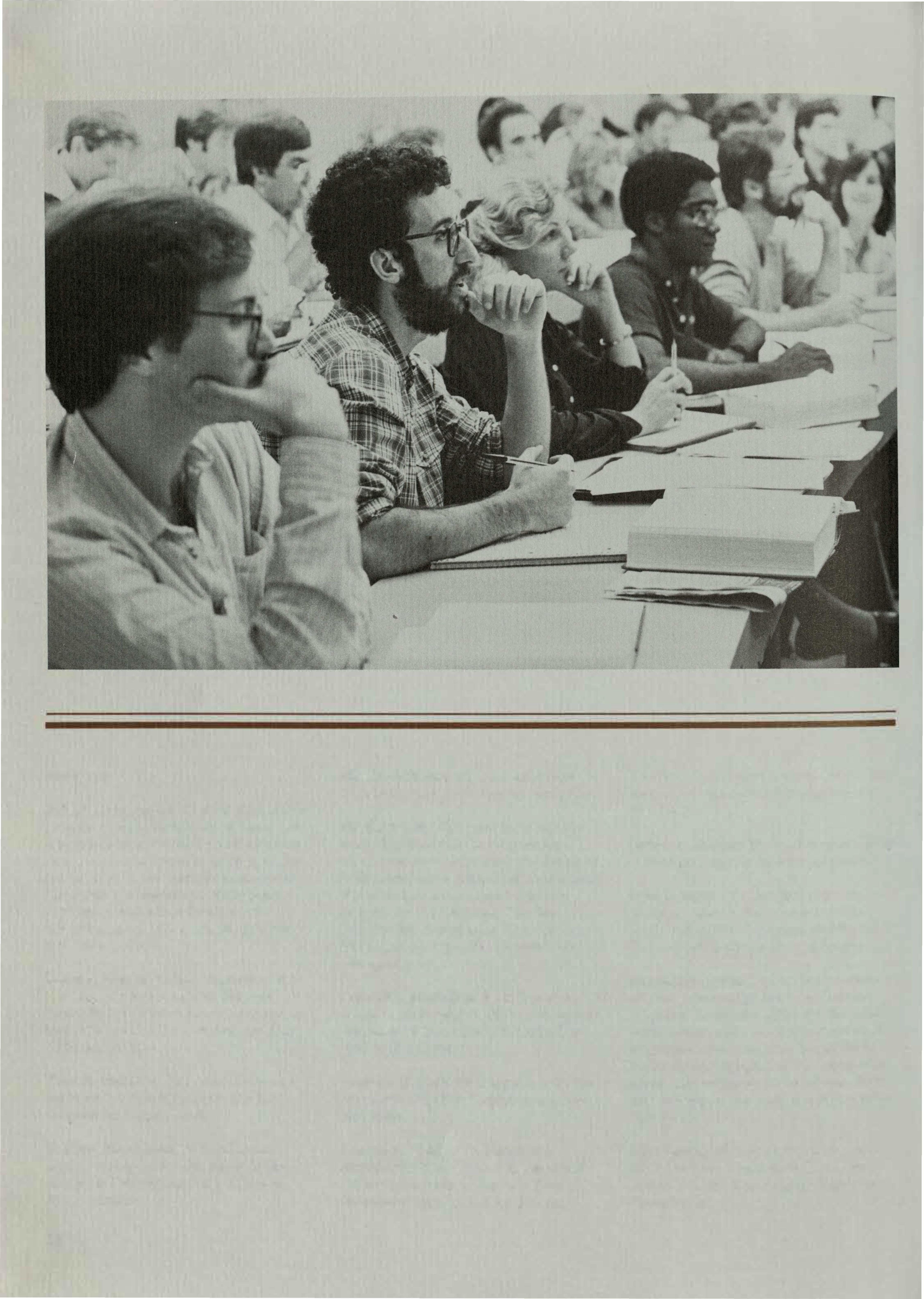
Elizabeth Hanna '81 is an associate with Best, Best & Krieger in Riverside.
Phyllis M. Hix '62 waselectedto the StateBar Board of Governors for a three-year term. Recently, she lectured in Denver onthesubject of trying punitive damage cases. She also was a lecturer on the CEB-Los Angeles County Bar Association joint series. She ispracticing in San Marino and Orange County.
Janice Kamenir-Reznik '82 has associated with Benjamin N. Reznik under the name of Reznik and Reznik. The firm is in Encino.
Andrew E. Katz '72 is a partner inthe newfirm of Leff & Stephenson in Beverly Hills.
Donald L. Kidder '74, James R. Sternberg'66, and Rand K. Shotwell '74 are principals in the new firm of Sternberg, Eggers, Kidder & Fox.
The firm will conduct a realestate, business, and commerical law practice in San Diego.
Jerold A. Krieger '68 has become a judge of the Los Angeles Municipal Court.
Ivan Lawner '72, after ten years residence in Alaska, has moved to New York and is with Herzfeld and Rubin, P.C., on products liability defense.
Richard H. Levin '76 has been a deputy attorney general in the New Mexico Attorney General's office for thepast year, responsible for office-wide legal administration, and also litigation in antitrustand telephone rate regulation areas. He served as an assistant attorney general in the antitrust division for two years.
Kurt Lewin '63, formerly a judge in the Alhambra Municipal Court, was elevated to the Los Angeles Superior Court bench.
Robert S. Lewin '72, former partner in Cohen & Lewin, opened his own offices in Newport Beach, specializing in civil litigationand commercial collection.
Daniel W. McGovern '70 has been appointed principal deputy legal adviserof the Department of State. Priorto becoming principal deputy, he supervised sections on European affairs, United Nations affairs, consular affairs, educational, cultural and public affairs, private internationallaw, and law enforcement and intelligence.
Scott T. Maker '82 is associated with thelaw firm of Weil, Gotshal and Mangesin Washington, D. C.
Stefan M. Mason '67 has formed a partnershipwith his wife, Belle, under the firm name of Mason & Mason. The officesin Century City emphasize labor relations matters.
Arthur Mazirow '58 hasjoinedasa
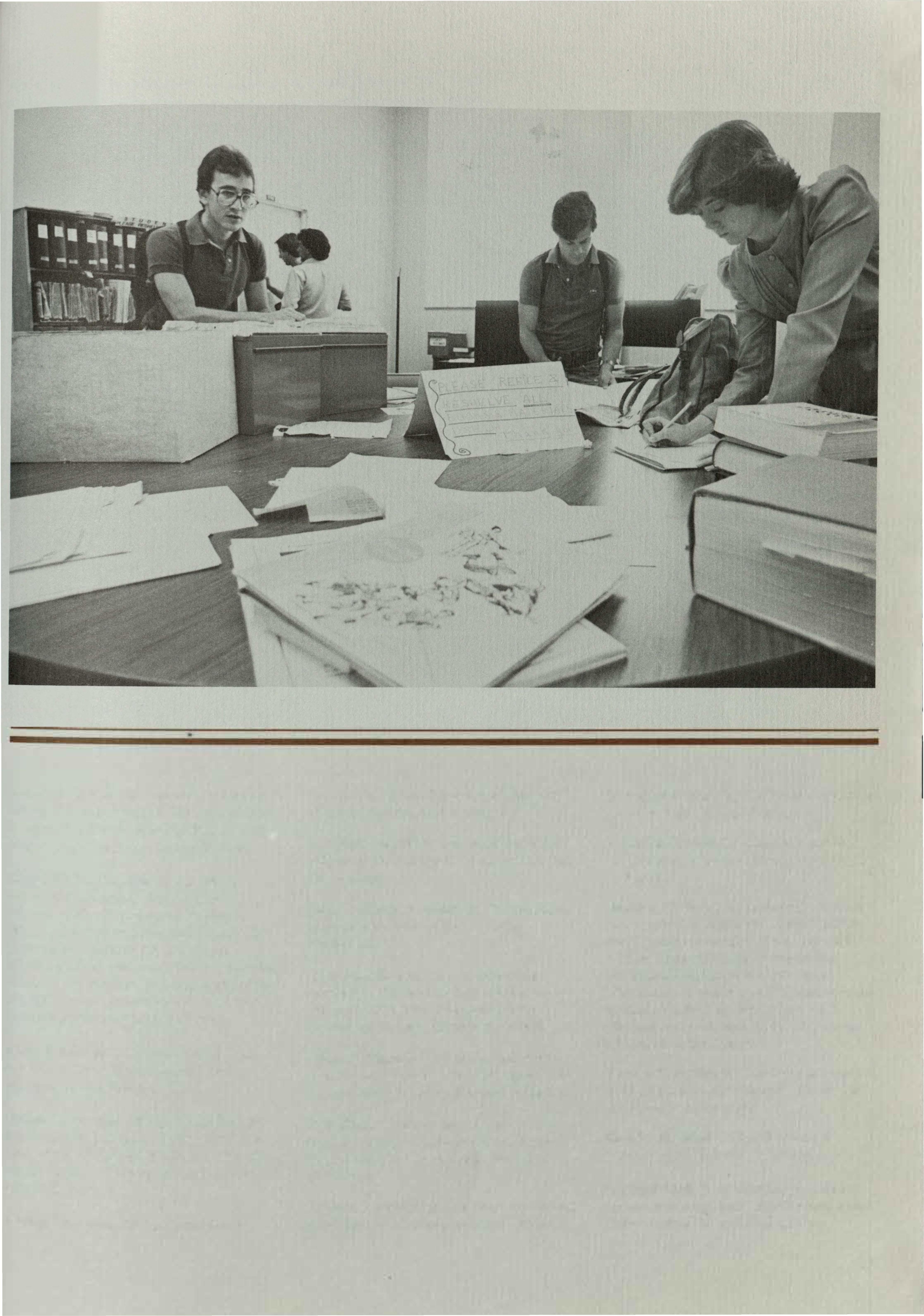
partner the firm of Buchalter, Nemer, Fields, Chrystie and Younger.
Lee Ann Meyer '82 has been named a fellowat the Center for Law in the Public Interest.
John S. (Rocky) Miller, Jr., '77 has been elected a partner of Cox, Castle & Nicholson.
Alan M. Mirman '75has become a partner in the firm of Epport, Kaseff & Mirman. The firm was previously known as Epport, Dennis & Kaseff.
Allan S. Morton '68 has opened his law practice in Century City. He specializes in commercial and real estate litigation.
F. William Murano '66, Mono County justicecourt judge, was named federal magistrate for the eastern district of California.
Andrea S. Ordin '65has beenappointed chiefdeputy attorney general, Division
of Public Rights, by California Attorney General John Van de Kamp.
J. David Oswalt '76 becamea partner of Kadison, Pfaelzer, Woodward, Quinn & Rossi.
StanleyG. Parry '67 is deputy directoradministrator ofthe Northern California Cancer Program in Palo Alto, the regionalcancerresearchcenterfor Northern California and Nevada. The center ismadeup of20 major institutionsconducting laboratory and clinical research, anditalsodevelops educationalprograms.
Steven Z. Perren '67 has been appointed to the bench ofthe Superior Court for the Countyof Ventura.
Charles C. Read '75has become a partner of O'Melveny & Myers.
Michael Rich '76 is director of defense resourcemanagementstudiesand associate head of thepolitical science
department at Rand Corporation in Santa Monica.
Craig Riemer '80 hasjoined thefirmof Babcock and Cappelli in Riverside. Formerly, he was with Swarner & Fitzgerald.
Glenn Rothner'75 has become apartner inthe firm of Reich, Adell & Crost, which specializes in representationof labor unions and their members.
Judge Laurence Rubin '71 has been named presiding judgeof the Santa Monica Municipal Courtfor the year1983.
Richard Schauer '55 has been appointed presidingjustice of division 7, second appellate district, California Court of. Appeal.
Eric H. Schunk '81has joined the Los Angelesofficeof O'Melveny and Myers.
Adley Shulman '58 of Shulman and Shulman has become president-elect of the Beverly Hills Bar Association.
Rich Sinclair '78 has joined thetax div-
ision ofthe accounting firm of Arthur Andersen & Co.
John R. Sommer '82 has become associated with the Los Angeles officeof Kadison, Pfaelzer, Woodard, Quinn & Rossi.
Edgar J. Steele'82 is now associated with the firmof Wilson Morton Assaf & McElligott.
Sandra Stillwater '72 has relocated her office as a solo practitionerto Westwood. Her practice emphasizes business, real estate, family law, and art law.
Franklin Tom '67 of Parker, Milliken, Clark & O'Hara has been named California's Corporations Commissioner by Governor Deukmejian. Tom, who also holds degrees in accounting and finance, willhave regulatory responsibility for stale laws covering business franchises andthe saleof securities, and for lender-fiduciary statutes.
John Vaisey '68 is now engaged inthe general practice of law with officesin Molalla, Oregon.
Michael Waldorf '67 has established Waldorf Search Associates in Los Angeles, which recruits and places attorneys and executives. Offices are located in Brentwood.
Diane A. Ward'77 isnow associated with Seyfarth, Shaw, Fairweather and Geraldson in its Los Angeles office.
Caryl Bartelman Welborn '76 has become a partner with Morrison & Foerster in San Francisco. Sheispracticing in the area of real estate law.
David E. Wood '71 has opened newoffices in Westwood, limiting his practice to criminal defense and consultation to civil attorneys regarding criminal matters.
NECROLOGY
Manuel G. Gonzalez '54 ofthe Los Angeles bar in March, 1983.
John Michael Pace '68 on November16, 1982.
Glenn W. Racich '77 of the Los Angeles bar on October 17, 1982.
TwoWays to Become More Involved in Your Law School
1, Ifyournamehasn'tappearedlately intheClassnotes, takea momenttosharesomenewsaboutyourselfforthe nextissue ofUCLALaw.
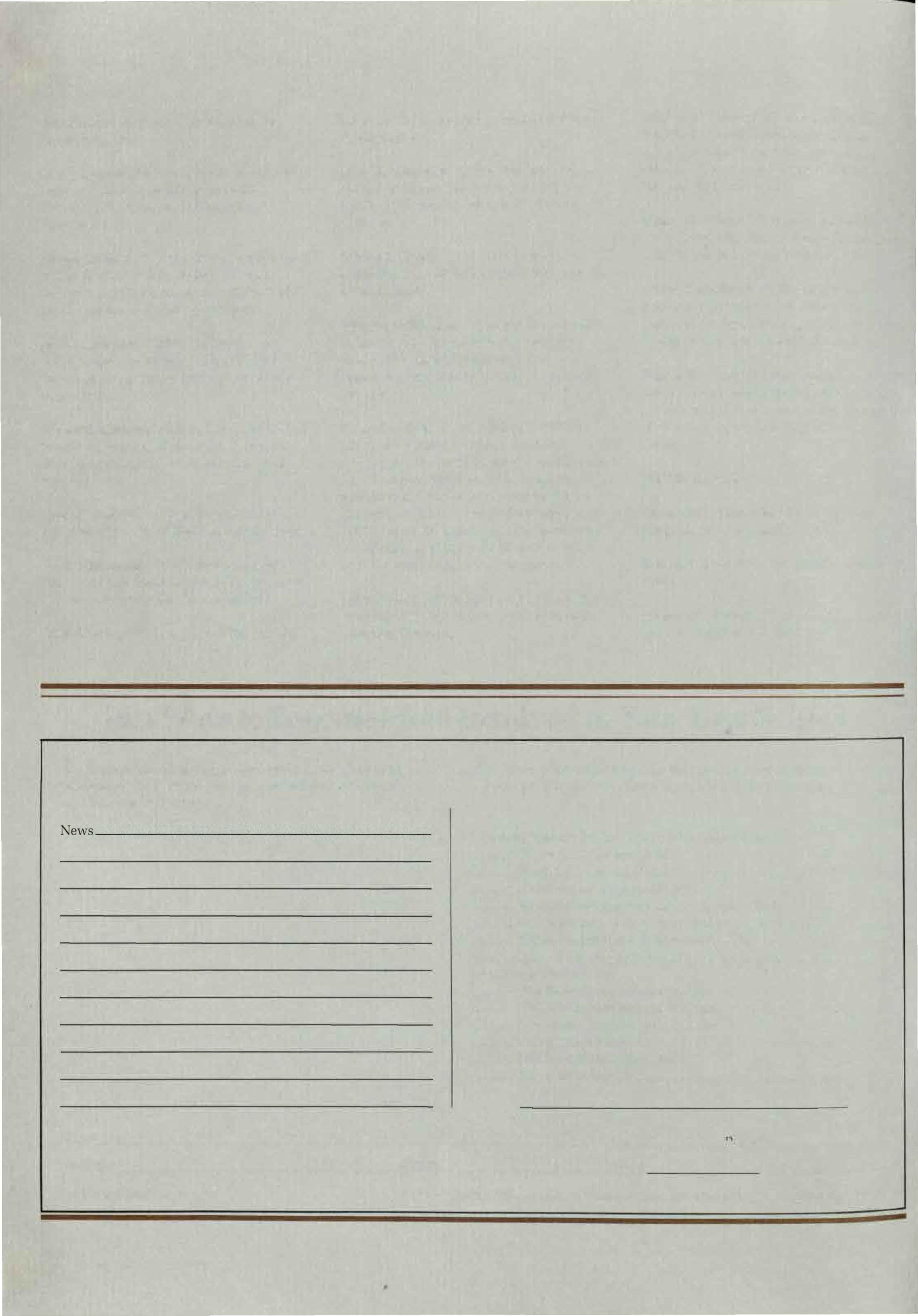
DCheck ifaddressis
2, Show your interestbychecking one or more of the involvementopportunitieslisted here. We'll followthrough.
Iwanttosupportthe law journalsby subscribing to:
UCLALaw Review ($20)
BlackLaw Journal ($12.50)
ChicanoLaw Review ($5.50)
FederalCommunicationsLawJournal ($15)
UCLAJournalofEnvironmentalLaw & Policy ($15)
UCLAPacific BasinLaw Journal ($15)
Subscriptionchecks payable toindividualjournals.
Iwanttoparticipatein:
The Law Alumni Association
The MootCourtHonorsProgram.
Placementseminarsfor students.
AdvocatesfortheArts.
Fund-raisingfortheSchool.
Otherinterests: __

